Egypt, or the mention of it, conjures exoticism: be it the pyramids, Pharaonic masterpieces, the Nile or the Red Sea, a sense of curiosity, intrigue and romanticism is piqued. It's where stepping back several thousand years requires only a step outside: the streets are a relic of the ancient world and they are peppered with artefacts that date to Pharaonic Egypt.
If you're a history buff, as am I, then a visit to Egypt is integral, at least once in your lifetime. There's a certain kind of magic that's attached to sailing along the Nile on a felucca, standing before bare pyramids surrounded by entombed aristocracy, riding through the desert on a camel or snorkelling in the Red Sea - it's all part and parcel of a visit, hence this itinerary for visiting Egypt.

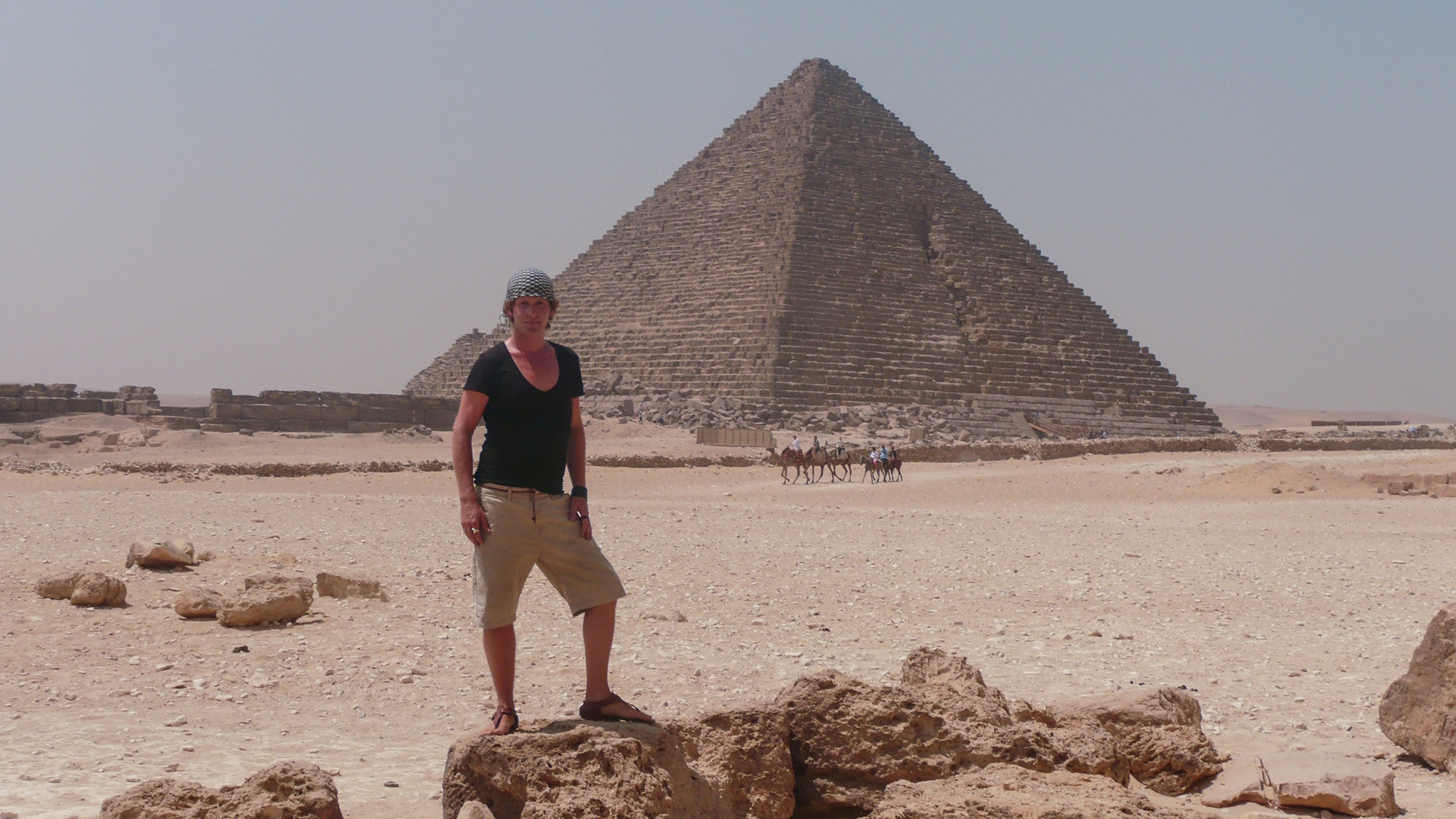
Granted, political instability over the years has created uncertainty about safety in the region. I was fortunate to have visited at a time when political entities were changing, a period of quiet and peace. It started several weeks before I arrived and ended shortly following my departure.
If you do your research carefully and review the advice of others who've recently visited, then you'll know what to expect amid the current political climate.
Of course, it's always wise to review the advice your home government issues in terms of visiting other countries, Australia's being Smart Traveller. Do take advice with a grain of salt as governments assume (or at least should assume) responsibility and accountability for the safety of their citizens so they tend to issue the highest level of warning. It's why I recommend doing as much research as possible (including reviewing the recommendations of other travellers who've recently visited) so you can make a truly informed and safe decision.
I certainly hope this itinerary imbues you with an ounce of wanderlust, shifting your gaze and travel plans toward Egypt. Wandering through the land of old was one of the most rewarding journeys of my travel career.
Solo Travel Note on Egypt
Aside from the persistent touts who tried to capture my attention — sometimes physically — to lure me into their shops, I moved almost seamlessly through Egypt without major issues.
As a male traveller, it may generally be easier to avoid being targeted than it is for female solo travellers. However, with my blonde hair and somewhat effeminate demeanour, I sometimes encounter harassment while travelling solo. In Egypt, though, I found my experience to be different; I didn’t face negative attention.


Egyptians were hospitable, kind, and helpful, stepping in to assist whenever I needed it. I also met a handful of other travellers with whom I spent some enjoyable time. Overall, travelling in Egypt on my own wasn’t hard.
Here's hoping you have a similar experience.
Save this itinerary (and guide) for future reference!
Solo-Traveller Itinerary for Egypt Overview
➡ Days 1–3: Cairo
Dive into Cairo’s bustling streets, explore the Egyptian Museum, wander Khan el-Khalili, and marvel at the mosques in Islamic Cairo.
➡ Day 4: Giza
Spend a day dedicated to exploring the Pyramids of Giza and the Sphinx, learning about the history and mystery behind these ancient wonders.
➡ Days 5–8: Aswan
Head south to the relaxed city of Aswan, where you can explore Philae Temple, the Nubian Museum, and take a day trip to Abu Simbel.
➡ Days 9–11: Nile Felucca Sailing
Embark on a 3-day felucca journey up the Nile from Aswan to Luxor. Sleep under the stars and soak up the tranquil beauty of Egypt’s most iconic river.
➡ Days 12–15: Luxor
Luxor is a trove of ancient wonders. Explore Karnak and Luxor Temple on the east bank, and the Valley of the Kings and Queens on the west.
➡ Days 16–18: Dahab
Experience the Red Sea’s beauty with world-class diving and a laid-back beach atmosphere in Dahab.
➡ Days 19–20: Mount Sinai
Ascend Mount Sinai for an unforgettable sunrise, followed by a visit to St. Catherine’s Monastery.
CAIRO (القاهرة) (Days 1-3)
It's chaotic, rhythmic, enthralling, infuriating and beautiful. With 22-million inhabitants, there's no wonder the Egyptian capital is always alive with a hum. Horns continually honk, minarets echo call to prayer throughout the city, Egyptians speak in an animated Arabic to one another in every fissure of the city and a ubiquitous energy pulses rhythmically through the air.
It can be exhausting, overbearing even, but as your lungs congest from the car fumes and your mind frazzles, you'll smile and understand why it's affectionately dubbed the Mother of the World.
I fell a little in love with Cairo and I think she felt the same way.
There's really no limit to your exploration of the intense capital. However, to save you experiencing decision fatigue, I'll introduce you to a handful of the city's key attractions, helpful if you only have a day to spare.
Sights to See and Things to Experience in Cairo
Muhammad Ali Mosque and Sultan al-Nasir Muhammad ibn Qala’un Mosque
Inherent to life in the Arab and Islamic world are mosques. They're as ubiquitous in Cairo as they are in any other city in which the majority are Islamic devotees. You'll often hear them before you see them, the sound of call to prayer bouncing through the night air, rousing you from sleep between 4 and 5am.
Architecturally and aesthetically, the two most impressive mosques in Cairo, in my experience, are Muhammad Ali and Sultan al-Nasir Muhammad ibn Qala’un. Muhammad Ali Mosque is the most prominent, seen from various vantage points when approaching the city. Inspired by the Ottomans, it's the most dominant, with a height of 52 metres and an equally large central dome.

Sultan al-Nasir Muhammad ibn Qala’un Mosque, also located in the Citadel of Cairo, is no less impressive with walls constructed of limestone (pillaged from the pyramids) and red granite pillars. It's several hundred years older than Ali Mosque and, in my opinion, the more photogenic of the two.
Ensure you dress appropriately if you visit either mosque (or any other mosque in the world) by covering shoulders, navels and knees.
Islamic Cairo
A walk through Islamic Cairo showcases areas around the Citadel and walled city that were established during the 19th and 20th centuries. It's no more Islamic than other parts of the city, a misconception given the name. Islamic Cairo merely refers to the areas that were established and flourished in the early period of Islam, a name that distinguishes it from the sites belonging to Ancient Egypt such as Giza.
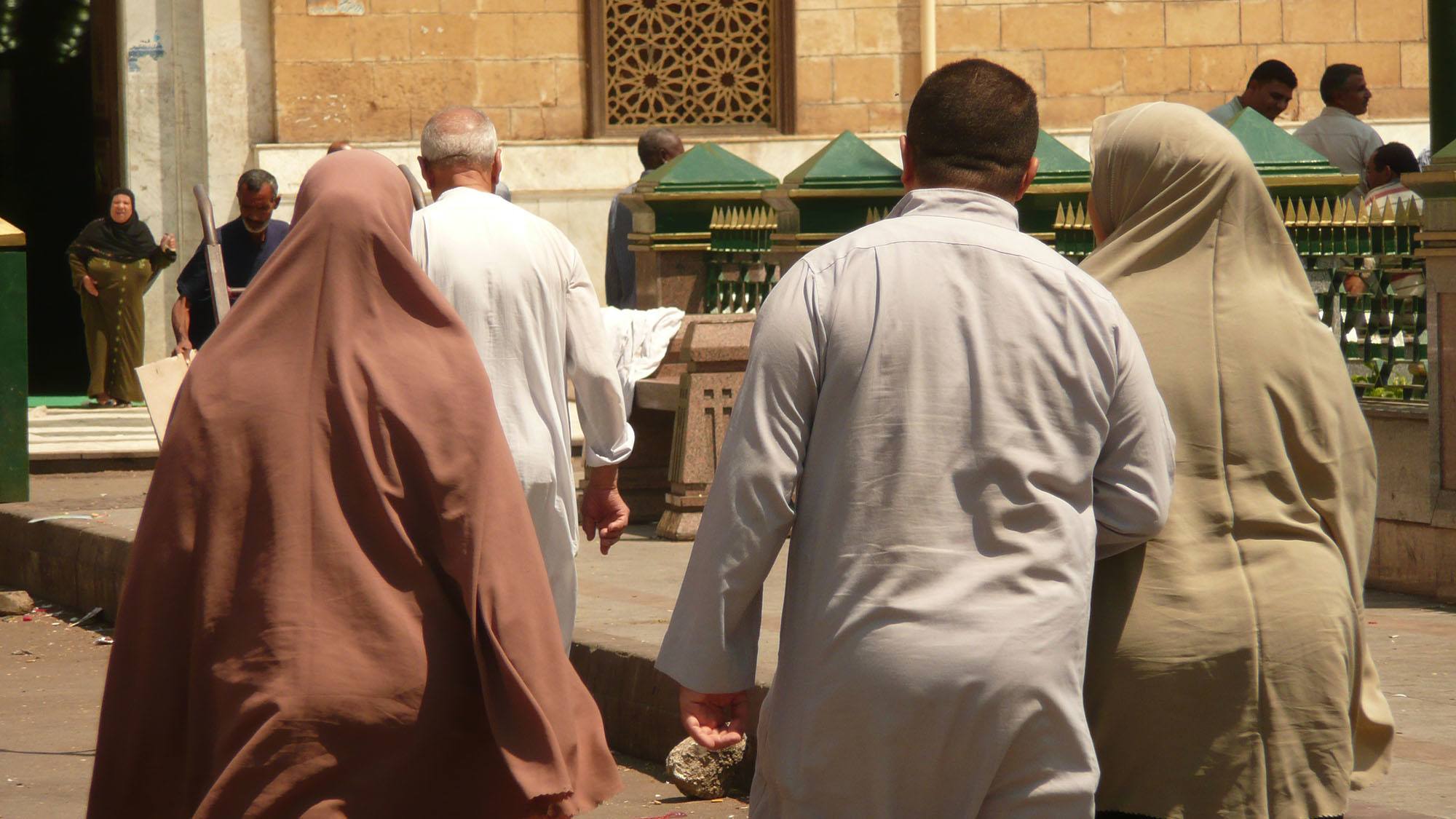
I found that Islamic Cairo is where Islamic tradition feels more present than elsewhere, with full-length robes outnumbering modern attire. It’s also more pedestrianised than other parts of Cairo and, notably, a little more peaceful, making it ideal for wandering.
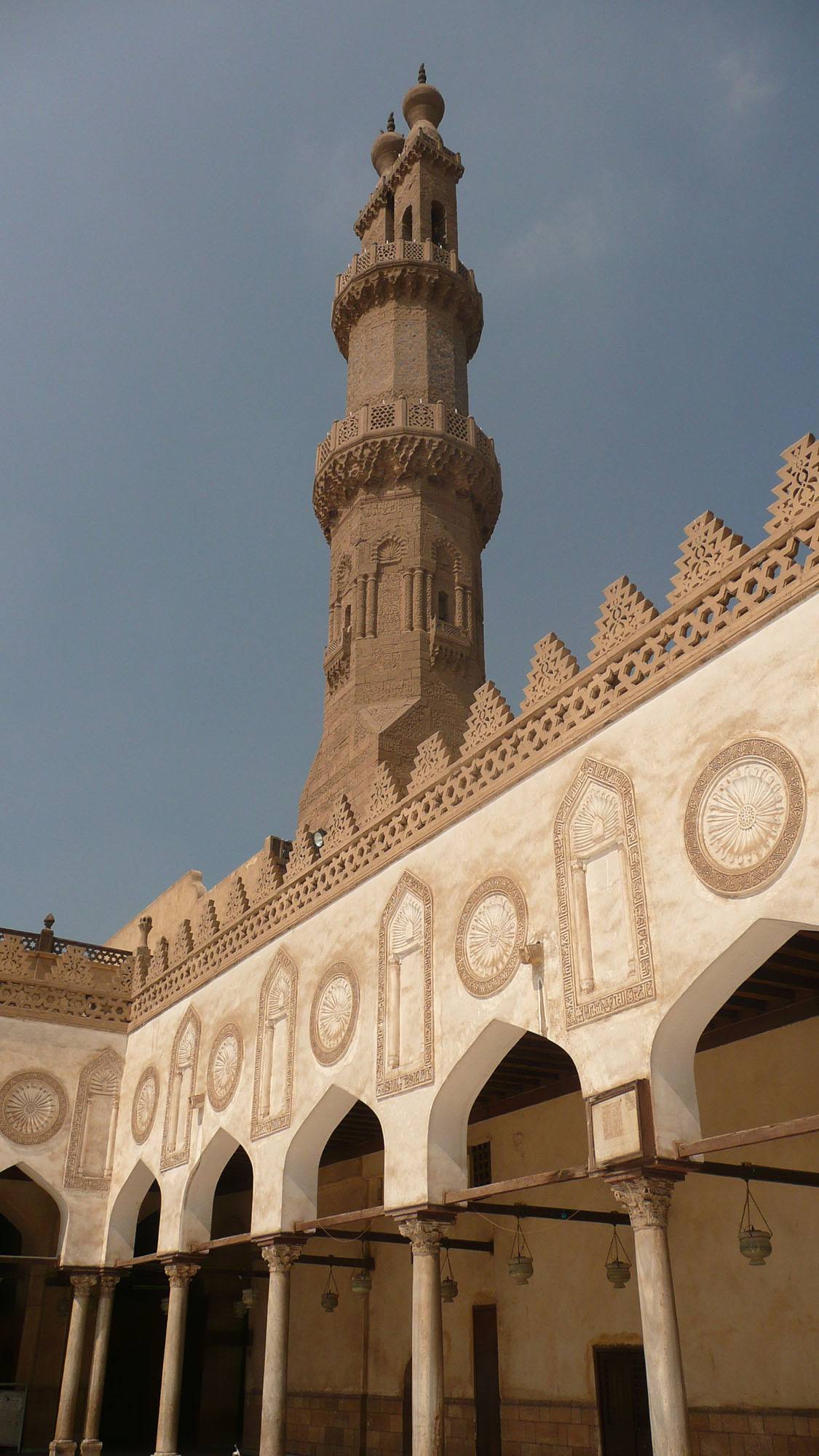
Ensure you include the following districts on a walking tour:
- Midan Hussein (the area that contains Khan Al Khalili - outlined separately below)
- Darb Al Ahmar
- The Citadel all the way to Tulun
The area is immense and there's so much to see it would take several days. Do a little more detailed research and choose the sites that pique your interest. Alternatively, hire a city guide - fluent in your preferred language - who can showcase the highlights.
Khan el Khalili
Even if shopping isn't your activity of preference, a visit to Khan al Khalili is integral to visiting Cairo merely for seeing how traders have worked since the 14th century.

It's home to a spider's web of snaking, skinny lanes along which are peppered shops selling everything - souvenir pyramids, precious stones, soap and clothing. If you conjure an image, turn a corner and you'll likely find it, in the flesh.
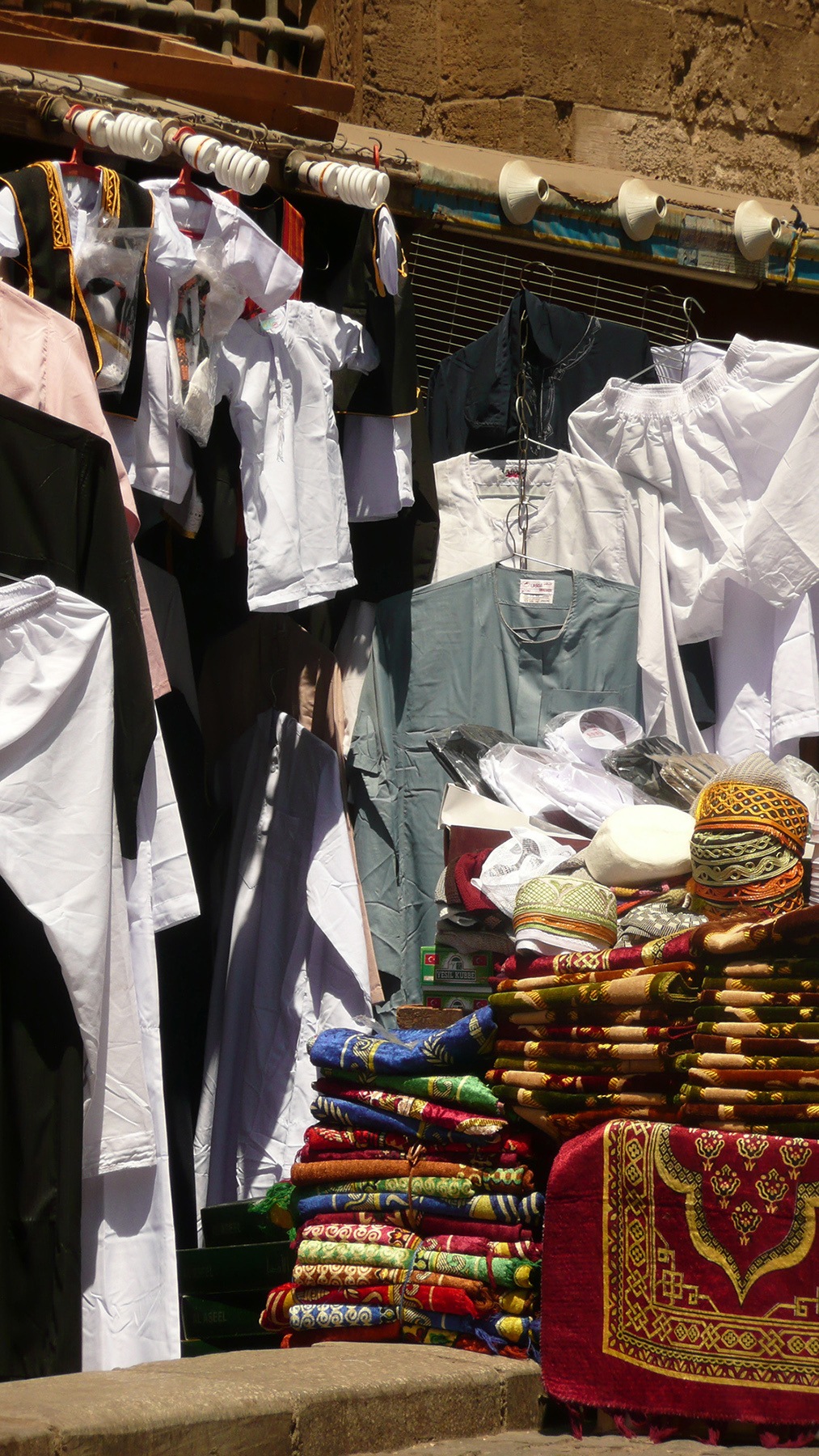
I lost countless hours walking the lanes, talking to vendors, tasting peppermint tea and testing my powers of negotiation over stones to gift my sister. Shops open at 9am and close sometime after the sun disappears (except for Fridays and Sundays).
Egyptian Museum
Stepping foot inside the Egyptian Museum took my breath away: aside from the lack of ventilation mid-summer, the Pharaonic treasures that filled the cases - including glittering jewellery, mummies and miscellaneous paraphernalia - were otherworldly.
At the time I visited, the museum was overflowing with goods from the ancient world. Since then, more archaeological discoveries have been made, outdating some relics but all are being showcased together.
You'll be hard-pressed to find room to breathe let alone to move. But, the reward is in the treasure: even if you don't care about the dynasty from which the glittering jewel originates, merely staring at it will induce the sense of being a child in a sweet shop. It's a visual kaleidoscope of the world's most important collection of artefacts, a real adventure through time.
Housed in an ugly pink building in Downtown Cairo, the Egyptian Museum is open between 9am and 5pm.
Fancy being guided? You can enhance your visit with a Private Cairo Egyptian Museum Tour (that includes lunch) for a more in-depth experience.
➡ Click here to book your tour
Egyptian Hospitality
Egyptians are no strangers to hospitality, a leftover from ancient times when feasts were arranged to honour visiting guests and dignitaries. In fact, hospitality is so important, a sense of honour has attached it to Egyptian cultural values, something that's endured and is embedded in modern-day etiquette and customs.
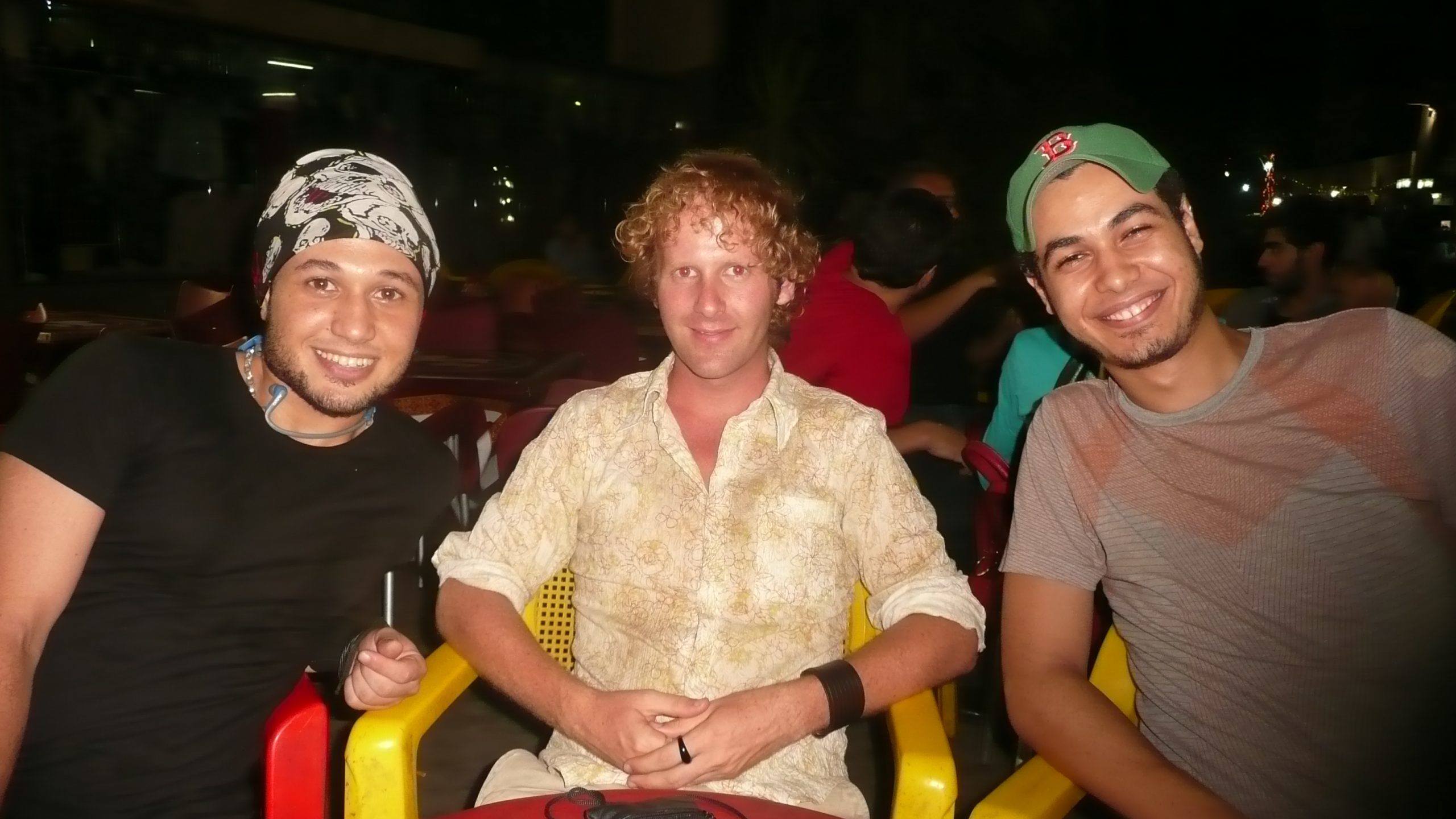
I was fortunate to be a figurative 'guest at the table of the banquet', a variety of Egyptians - including Sherif, a man with whom a friendship has endured many years - adopting me into their social circles, making me feel as though Egypt was home.

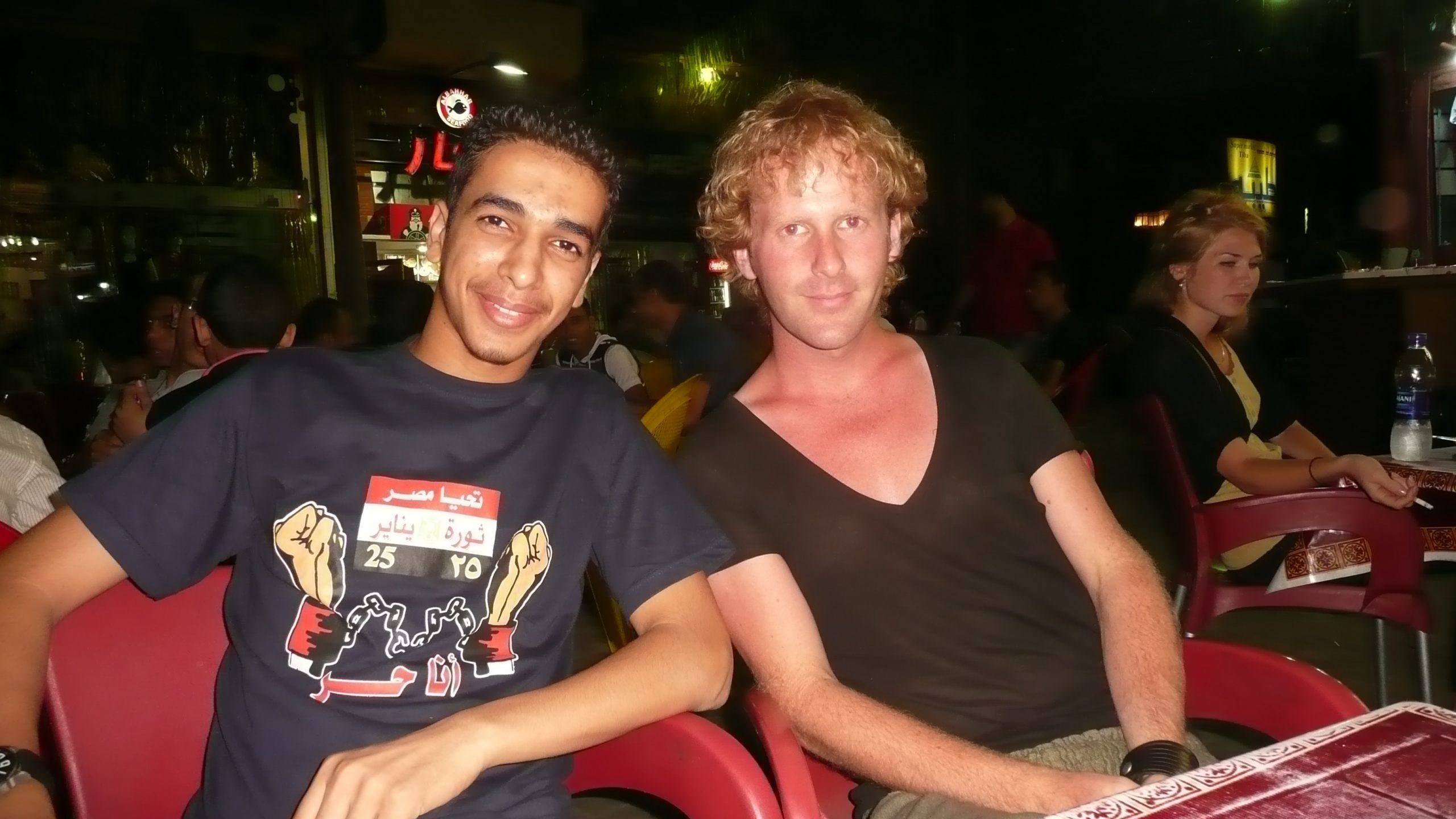
If you're open, respectful and willing to engage, then Egypt and her people will treat you with kindness and equal amounts of respect. Surrounded daily by spirited Egyptians, I truly felt welcome.
Recommended Length of Stay in Cairo
I spent four days in Cairo and wish I could have stayed longer.
Although chaotic, loud and congested, there is an energy pulsing through the ancient city that's hypnotic. However, it's not everyone's cup of Egyptian tea so you could certainly rush through in two days if you judiciously choose those key sights which appeal and stick to your choices.
Accommodation - Staying in Cairo
Budget: Meramees Hostel
This is where I stayed. Located in Downtown Cairo, it offers affordable beds and rooms with a decent central location. The staff are friendly and the facilities are clean.
Mid-Range: Champollion Palace
Champollion Palace is a nice step up from budget accommodations without breaking the bank. The rooms are cosy and well-kept, offering a comfortable retreat after a day of exploring. The location is perfect for wandering around downtown Cairo, and the on-site restaurant serves up decent meals if you're too tired to venture out.
High-End: The St. Regis Cairo
If you want to indulge, The St. Regis Cairo is the place to be. According to reviews, you're treated like royalty, with luxurious decor and impeccable service. The rooms are spacious and beautifully designed, and the views of the Nile from the hotel are apparently breathtaking. It would be a splurge but if you're looking to pamper yourself during your stay, I'd say it'd be worth every penny.
Food - Eating in Cairo
There’s no shortage of food options in Cairo, and the scents of freshly cooked Egyptian dishes fill the air everywhere you go. Street food is a great place to start, offering authentic flavours at budget-friendly prices. For a few memorable bites, here’s where I’d recommend:
Abou Tarek
- If you’re after koshari, Egypt’s ultimate comfort food, Abou Tarek is the spot. This multi-layered mix of pasta, rice, lentils, and crispy onions topped with tomato sauce and chilli packs a punch. It’s a bustling, no-frills experience that’s as local as it gets.
Zooba
- Known for its modern take on Egyptian street food, Zooba is ideal if you’re in the mood for something fresh but familiar. I’d go for their ta’ameya (Egyptian falafel made with fava beans) or their range of sandwiches – a slightly pricier spot but worth the taste and quality.
El Prince
- Located in Imbaba, this spot is perfect if you’re after traditional Egyptian dishes like liver and molokhia (a green leafy soup), and kebab. It’s lively and crowded, so you may need to wait, but the food more than makes up for it.
Felfela
- For classic Egyptian food in a tourist-friendly setting, Felfela is a long-standing favourite. Try the pigeon stuffed with rice or the grilled kofta. This is a great place to sample several Egyptian dishes in one sitting.
Kazaz
- Perfect for shawarma lovers, Kazaz serves up tender, juicy shawarma wraps along with other Egyptian sandwiches. The flavours are strong, and it’s conveniently located near Tahrir Square.
Wherever you go, eating in Cairo is bound to be memorable, from simple street stalls to iconic eateries. Just follow your nose – you can’t go wrong!
Transportation - Getting around Cairo
On Foot
If you're staying in a central location and only plan to see nearby attractions, then getting around on foot is ideal. It'll give you a chance to really feel the rhythm of the city, up close and intimately. However, the heat can be overbearing as can the touts. I'd recommend taking public transport for moving between sites that are far apart.
By Bus
Buses in Cairo quite literally go everywhere. If you're not proficient in Arabic, though, knowing when to get off can be a challenge (but only if you don't have Maps.Me installed or can't use Google Maps). There is usually someone on board who will speak English if you're worried and will kindly show you where you need to get off - don't be afraid to ask.
The buses are red, white and blue in colour. They are cheap but very crowded with locals moving around the city.
Sexual harassment can be an issue for women (and even effeminate men) so, if you feel you might encounter threatening behaviour, opt to take a slightly more expensive no-standing bus service (that's never overcrowded and will feel safer). They're also cheap, at 2 LE a ride.
Ask locally or at your accommodation for advice about which service to get.
By Metro
There is a colour-coded metro in Cairo with three lines and it's great! In fact, it's one of the only metro systems in all of Africa. These are the lines:
- Red - 35 stations
- Orange - 20 stations
- Green - operational but under construction and expanding
As at 2020, prices are:
- 3 LE for 9 stations
- 5 LE for 10 to 16 stations
- 7 LE for 16 station or more
A few things to note:
- there are women-only cars (usually in the middle of the train)
- timetables don't exist but trains are frequent
- they don't run between midnight and 6am
Give it a go and let me know what you think.
Transportation - Getting to Cairo
By Air
The main airport in Cairo - and the second biggest in all of the African continent - is Cairo International Airport. Lots of domestic and international locations have flights to Cairo. A few airlines to review include:
- Singapore Airlines
- Lufthansa
- Alitalia
- British Airways
- Air France
- Etihad
The national carrier is EgyptAir.
To search for a route and fare that suits you, research the following sites:
By Train
The main train station in Cairo that receives services from various locations throughout the country (such as Aswan, Luxor and Alexandria) is Ramses Station. See Seat61 for comprehensive details of routes, fares and quality of services and trains.
By Bus
There are bus services from all over Egypt to Cairo. Here are a few of the routes:
- Suez to Cairo - 2 hours
- Sharm El-Sheikh to Cairo - 8 hours
- Nuweiba to Cairo - 6 hours
- Alexandria to Cairo - 2 hours
The two key stations in Cairo at which you'll arrive if you take a bus are:
- Midan Ramsis
- Cairo Gateway
GIZA (الجيزة) (Day 4)
Synonymous with the extraordinary Giza Pyramids - a tribute to the ancient world, Giza is perhaps one of the first destinations newcomers to Egypt visit and understandably so.
On the edge of the desert (even though Giza is technically all of Cairo west of the Nile), the extraordinary geometric structures - constructed between 4000 and 5000 years ago - have withstood the test of time. Built originally to house tombs of the pharaohs, they continue to puzzle historians and archaeologists: how were they constructed?
Theories abound and maybe you'll come up with your own romanticised notion while exploring the four key sights: the Great Pyramid of Khufu, the Pyramid of Menkaure, the Pyramid of Khafre and, of course, the Sphinx.

A visit to Giza needs time - pencil in at least half a day. Sharia Al Haram is the main entrance point, while at the south end of Pyramids Road is Nazlet As Samaan, the village entrance to the Sphinx.
Riding a camel on sandy earth between these masterpieces of the ancient world was, for me, a true highlight of visiting Egypt — a bit of a cliché, I know, but unforgettable nonetheless.
Don’t miss wandering through the village as well before heading back to Cairo or onto your next destination.
Sights to See in Giza and General Information
Pyramids of Giza and the Sphinx
Constructed by large teams of workers, the pyramids are living testimony of the ingenuity, intelligence and organisation of the ancient Egyptians. Standing before the mighty structures inspires awe even in the least history-keen observer.

The Great Pyramid of Giza is, in fact, the only remaining of the Seven Wonders of the Ancient World, a structure of classical antiquity that's also the oldest of the seven - an indicator of how clever its designers must have been.
History of the Complex
The entire area, dubbed the Giza Complex, comprises the Giza Necropolis, the Sphinx, the Pyramids and Valley Temple of Khafre. As history goes, Giza served as the burial grounds for royals of the ancient world. Ergo, the Pyramids of Giza were purpose-built between 2613 and 2498 BC to honour the kings of the day.
Interestingly, the structures were constructed on the west of the Nile, the side on which the sun sets, as ancient Egyptians believed only the living should be on the east where the sun rises.
Practicalities of Visiting - Moving Around
Distances between each pyramid are quite extensive so, even though you may feel touristy doing so, get yourself a camel (for 50 LE - a price you'll need to negotiate to achieve) or a horse from a nearby stable (including NB and FB stables - prices are likely going to be fairer and rentals longer than those offered inside the site).
If you're looking for a more comprehensive experience, consider joining a Giza Pyramids and Sphinx Tour that also includes guided insights.
➡ Click here to book your tour
I hired and rode a camel but made the mistake of failing to check and see if it was an agreeable and healthy animal before getting between its humps. Part way through exploration, it turned and made haste for something on the horizon, in the opposite direction of the pyramids. Getting it to stop was a task, the guide forced to use a motorcycle to catch us and stop the free-spirited animal.
What to See and Do
Mentioned previously, there are four key sites to visit: the Great Pyramid of Khufu, the Pyramid of Menkaure, the Pyramid of Khafre and the Sphinx. The Great Pyramid is always open. The other two pyramids alternate, year in year out.
Yes, you can enter the Great Pyramid, tickets for doing so available at the main entrance ticket office (with prices listed below).

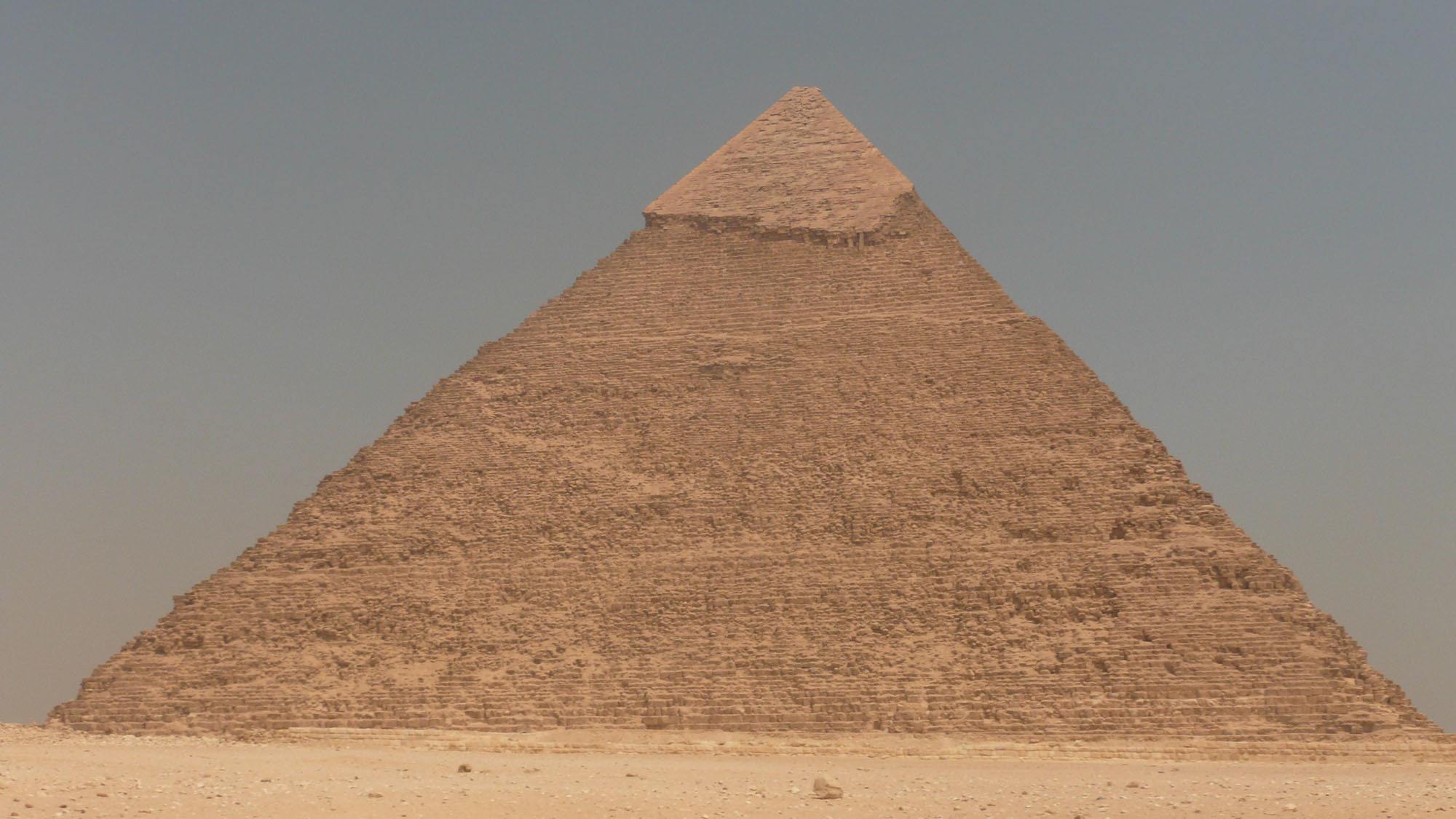
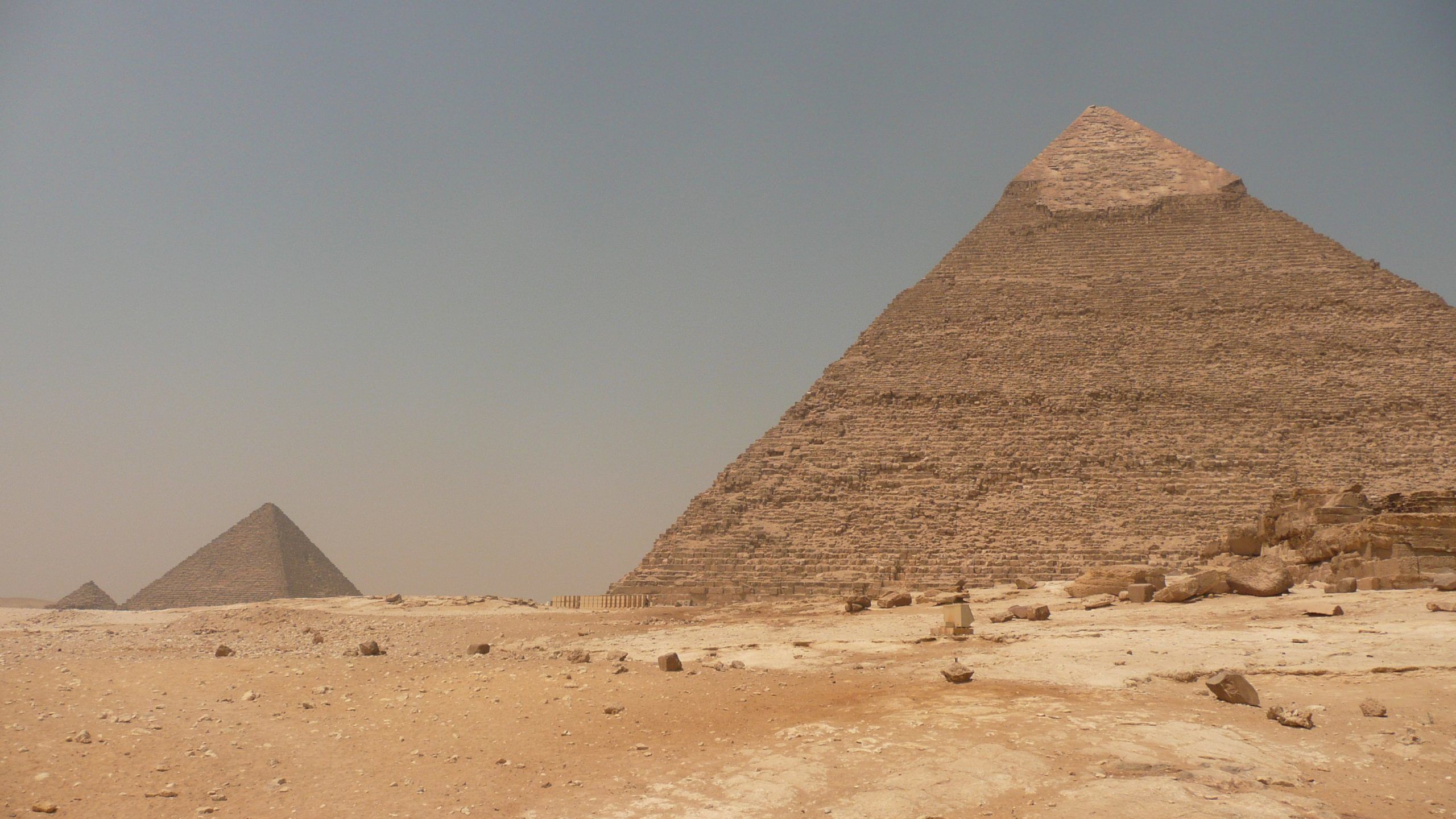
What can you do? Here are a few ideas:
- Visit the Great Pyramid (inside and out)
- Take a photo with it and one beside the Sphinx
- Spend time riding a camel or a horse
- Visit at sunset (if you can) by camel or horse
Tickets, Prices and General Information
A set number of general tickets are available each day so ensure you arrive early and queue so as not to miss out. Times - and tickets - are split between the morning (8am) and the afternoon (1pm with closing at 4pm which is stretched to 5pm in summer). Ticket prices are:
- 120 LE
- 60 LE for students
- 300 LE extra to explore the inner sanctum of the Great Pyramid
You're also charged for using tripods - it's normal, across the country.
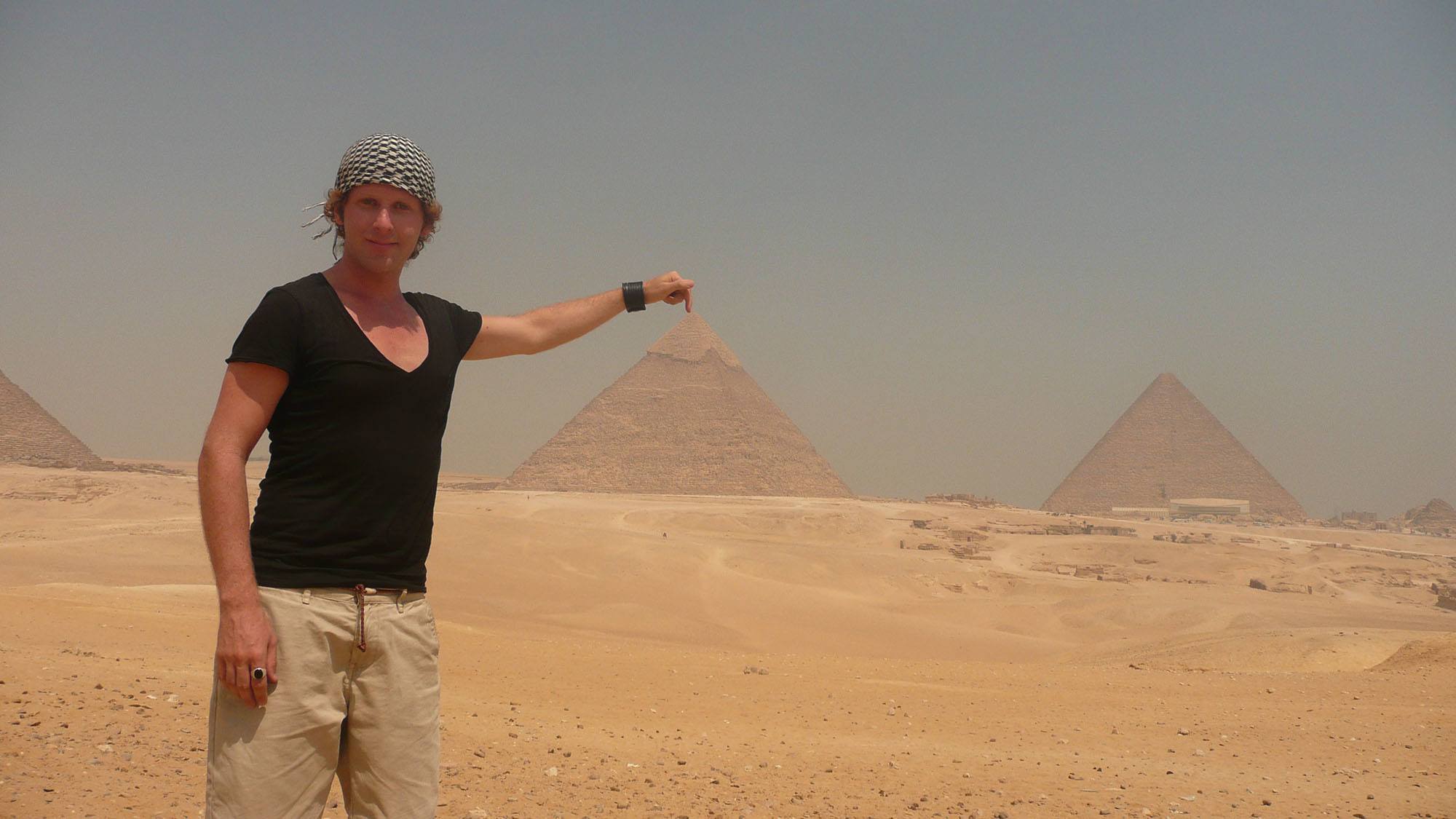

Crowds are a given, regardless of the time of day or year in which you visit. Don't be afraid (once you've ditched your camel or horse) to wander around - in a state of contemplation, find a quiet pocket and take a moment to appreciate the immensity of the site. You might end up finding some unique angles from which to capture the essence of the pyramids.
Recommended Length of Stay in Giza
I spent the better part of a day exploring the Giza Pyramids, the Sphinx and the village at the entrance to the historic site. I'd recommend spending at least half a day here to truly embrace the awe that the ancient wonder incites.
Accommodation - Staying in Giza
If you’re looking to experience more than just a quick day trip to the Pyramids of Giza, consider staying overnight to fully immerse yourself in this incredible area. Here are some options.
Budget: Sidi Hamad Pyramids View
Sidi Hamad Pyramids View is a great budget-friendly option that offers a direct view of the Great Pyramids. The rooms are simple but comfortable, making it a cosy place to rest after a day of exploration. Plus, the friendly staff is always ready to help with recommendations and organising tours, ensuring you make the most of your time in Giza.
Mid-Range: Onyx Pyramids Boutique Hotel
This place offers a cosy stay while only breaking the bank a little. It's just a short walk from the pyramids. The rooftop terrace is a highlight, providing stunning views of the pyramids, especially at sunset — perfect for a memorable evening.
High-End: Marriott Mena House
This is the epitome of luxury in Giza - the views are apparently outstanding. You can indulge in their exceptional dining options, unwind by the pool, or simply relax on the terrace with that iconic pyramid backdrop.
Transportation - Getting around Giza
On Foot
Once you've arrived, getting around on foot is perhaps the best option particularly if you're well equipped (with suitable sun protection, water and snacks) and you enjoy taking your time to absorb the atmosphere.
By Camel or Horse
As mentioned above, moving between the pyramids within the complex can be done on camel or horse, given that distances are far and the heat can be immense in the middle of summer. Ensure you bargain hard to get a price that's fair and check your chosen animal carefully - they're not all healthy and reliable.
Transportation - Getting to Giza
By Uber
If you have the application installed on your phone and have a working SIM or reliable internet connection, you can order an Uber which will save you haggling for a taxi. It's only 9km between Downtown Cairo and Giza.
By Taxi
If you fancy trying your hand at some competitive and spirited haggling, then opt to take a taxi from Cairo to the entrance of the pyramids.
I arranged transport through the hostel at which I was staying, the staff of which recommended and later provided a reliable and safe driver.
By Bus
If you're keen, take either bus 800 or 900 from Midan Tahrir square (in central Cairo) to the pyramids. There are large red-and-white and blue-and-white buses as well as small orange-and-white buses that do the trip back and forth. The small bus is number 82.
I took the bus from the airport to Downtown Cairo then walked to the hostel I'd pre-booked. I thoroughly enjoyed the experience and wish I'd taken the bus to the pyramids, too.
On A Private Tour
There are numerous companies that provide transfers from lodgings and locales around Cairo to the pyramids and other nearby locations. Ask at your accommodation for details and recommended companies.
By Metro
You can get part way to Giza with the Cairo metro network. However, you'll need to finish the journey by taking a bus or taxi. It's not the most convenient system to use, hence its place last in this list.
ASWAN (أسوان) (Days 5-8)
The pace is slow, the serenity a haven (especially after visiting Cairo) and the river wide and languorous. Aswan, the southernmost and smallest of the three tourist cities dotted along the Nile, is a place that cannot and should not be hurried.
Strategically positioned in ancient times as a garrison for military campaigns, the sleepy hollow is now home to Nubian villages peppered along the water's edge. It's also where you'll be able to access the wonders of Abu Simbel and Philae Temple.
Here are the sights I visited - prior to sailing to Luxor on a felucca - and recommend you consider putting on your Aswan-itinerary.
Sights to See and Things to Experience in Aswan
Nubian Museum
Located at the southern tip of Aswan (with fluctuating entry prices), the Nubian Museum is home to a wealth of Nubian treasure that was rescued during construction of the Aswan High Dam in the 1960s. The collection tells the enduring story of the Nubians, an ethnolinguistic Indigenous group who belong to Sudan and southern Egypt, people originally from the central Nile valley.
You cannot see all 3,000 objects in a several-hour visit so plan accordingly and choose the sections that interest you most. I found the collections I saw - which included artefacts of art, pottery and statues - to be beautifully displayed with explanations that were clear and easy to understand.
Expect to be solo as the museum is not frequently visited.
Aswan High Dam
Built throughout the 1960s, the Aswan High Dam is a rockfill basin which captures water from the world's longest river, the Nile, in Lake Nasser. Controversial due to the potential flooding of Nubian artefacts and the relocation of 90,000 Nubian people (to Sudan and other parts of Egypt) during construction, the dam has proven to be helpful in controlling annual Nile floods that used to wreak havoc in floodplains. Construction was monumental, 18 times the amount of materials used than that which was utilised for building the Great Pyramid - a modern day feat, I guess.

It's perhaps not the most intriguing site to see particularly with the likes of Abu Simbel nearby. However, it's generally included as part of an organised tour to see Philae Temple. For me, it was a 10-minute stop and photo snap en route to Philae.
Saint Simeon Monastery
Aesthetically akin to a fortress, the 7th-century St Simeon monastery - dedicated to saint Anba Hedra - is idyllic, set amid the shifting sands of the desert on the west bank of the Nile. At one point in history it was home to 1000 monks and was rebuilt following partial destruction in 1173. Despite being vacant since the 13th-century, I thought it to be in surprisingly good shape and was able to see some feint frescoes scattered throughout.
There's not much else on this side of the river, aside from the desert which stretches up to the river's edge and the Tombs of the Nobles. Ergo, you'll need to be really curious to take a boat across the Nile to the west bank. If you do traverse the river - either privately or via ferry, visit the Tombs then ride a donkey to the monastery.
At the time of visiting, the monastery cost 25 LE for an adult.
Temple of Isis at Philae
The journey to the Temple of Isis, perched on an island (previously Philae and now Agilika) in the middle of the Nile, begins with a boat ride along the meandering river.
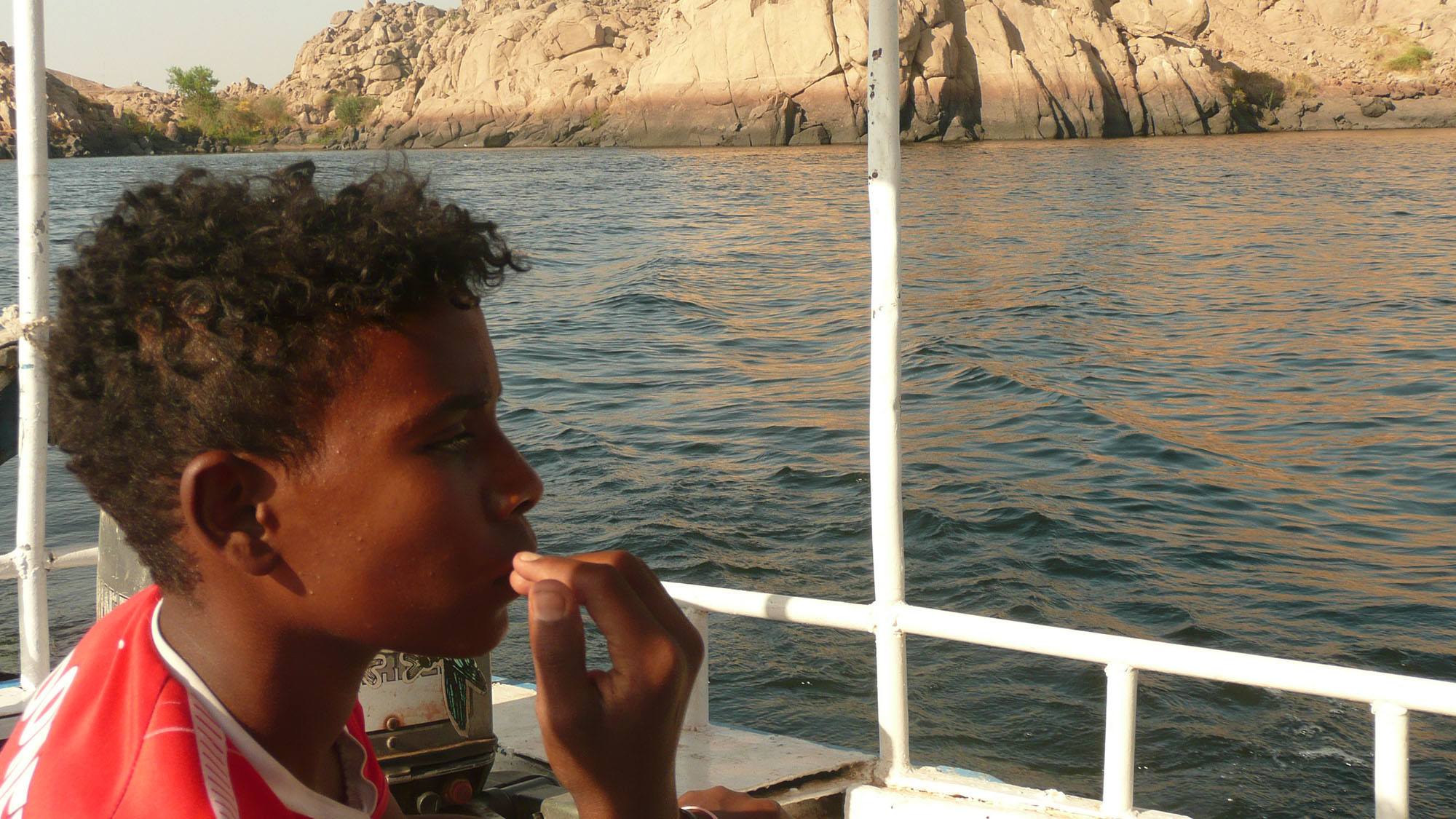
Built in the 7th century BC to honour goddess Isis - originally on the island of Philae, the temple was the last to be constructed in classical Egyptian style. It was painstakingly moved between 1972 and 1980 - thanks to a multinational UNESCO team - from Philae to Agilika to avoid complete submersion in Nile waters which would have eventually occurred, a result of opening the Aswan High Dam. Prior to its relocation, it would partially flood every year, an adventure for pilgrims who could visit on boats.
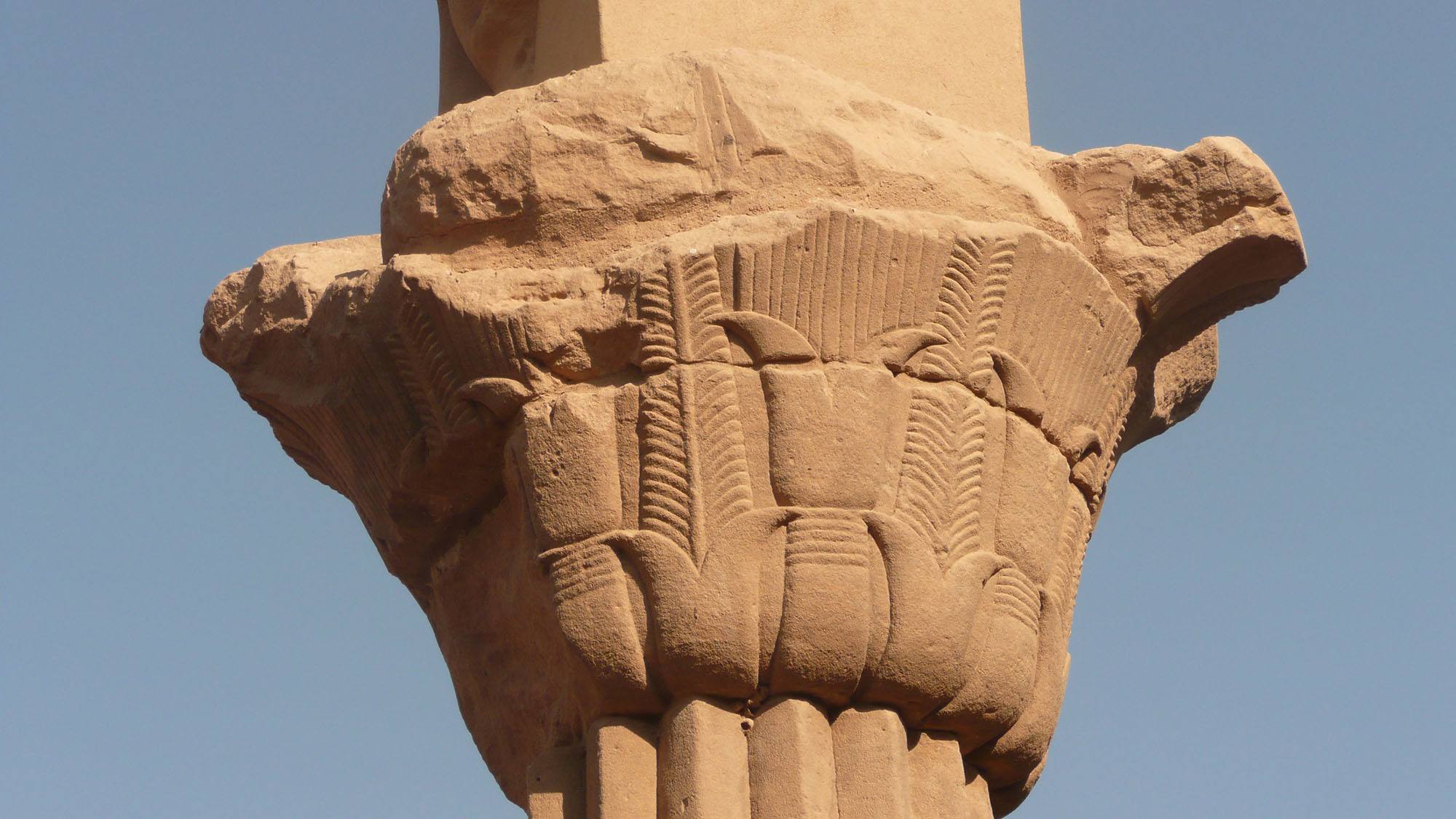
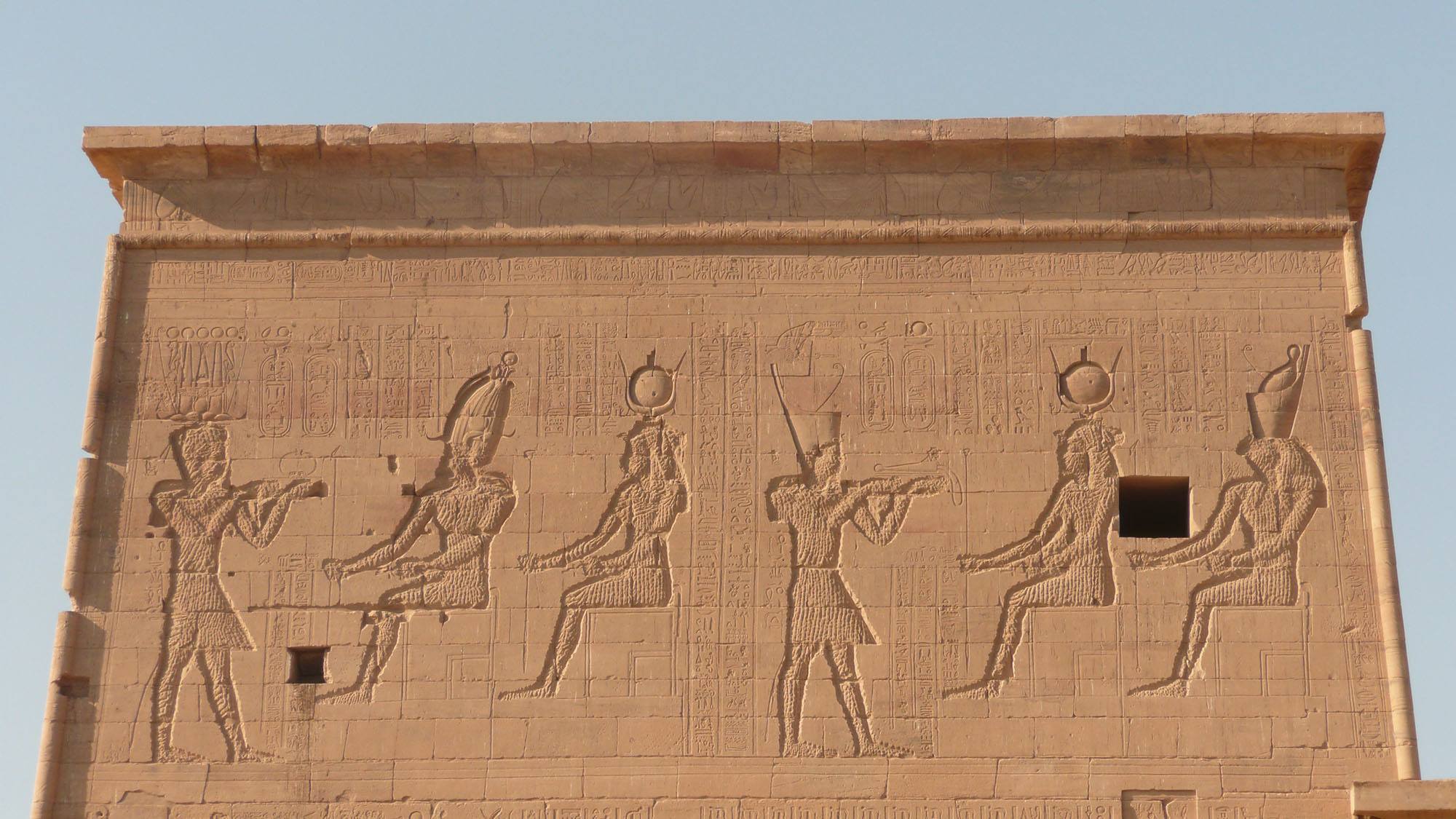

It now sits 20-metres higher than it used to and its new home of Agilika island has been manicured to resemble Philae, now covered by Nile waters.
It's comprised of multiple sanctuaries, gates, temples and inscriptions, all of which I found to be beautiful particularly when bathed in the golden light of dusk.
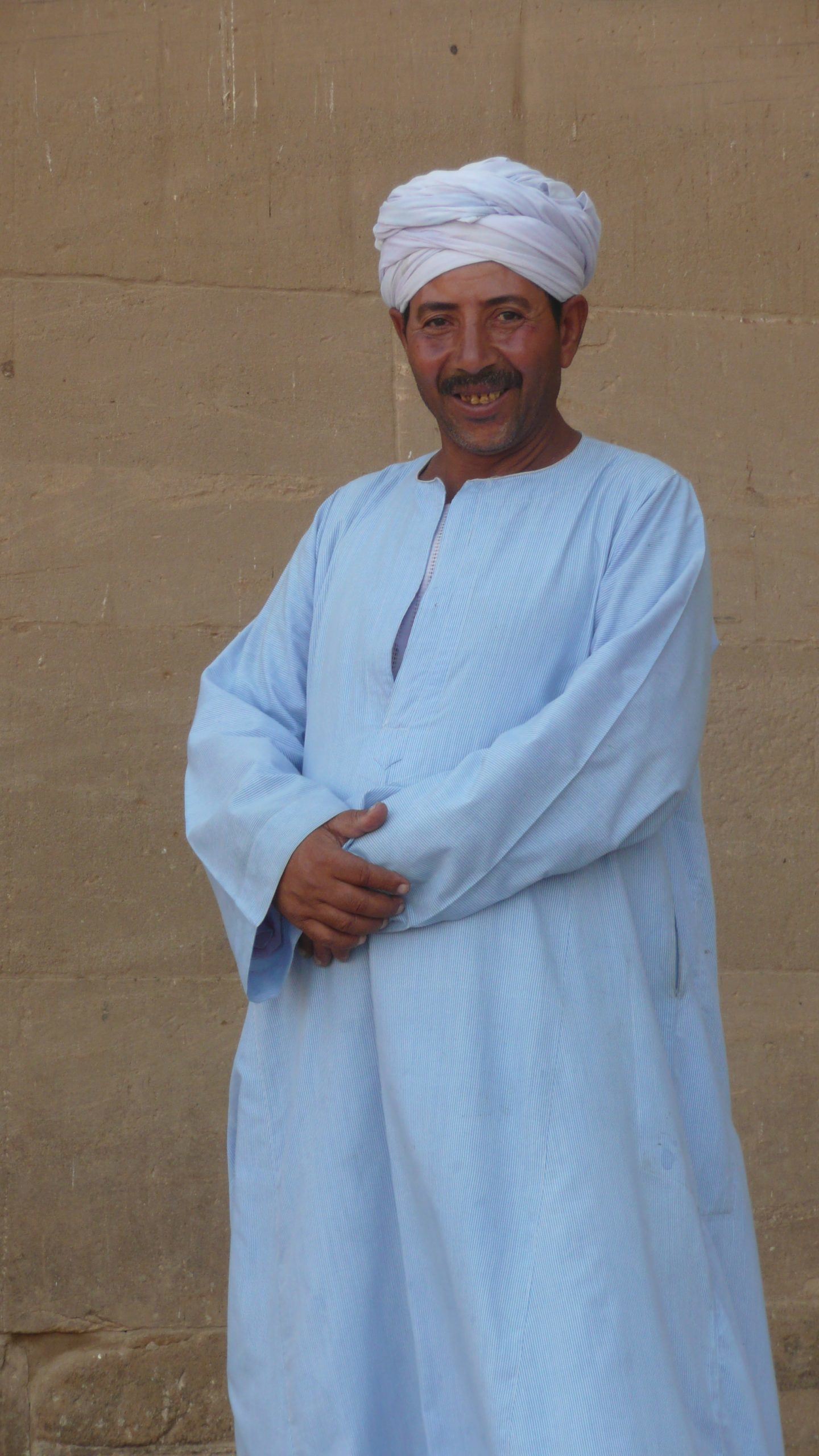

It was well worth a visit if only to appreciate the ingenuity in moving every single block, via boats, from one island to the next over an 8-year period.
Abu Simbel
Built by Ramases II, the temples of Abu Simbel are yet another engineering feat of the ancient world. What's just as impressive is their relocation, a block-by-block task that occurred in the 1960s to protect them from flooding, costing US$40 million. It took four years to complete. The current site, 210 metres away from the original location and a bit higher, is comprised of the original two temples: the Great Temple of Ramases II and the Temple of Hathor.
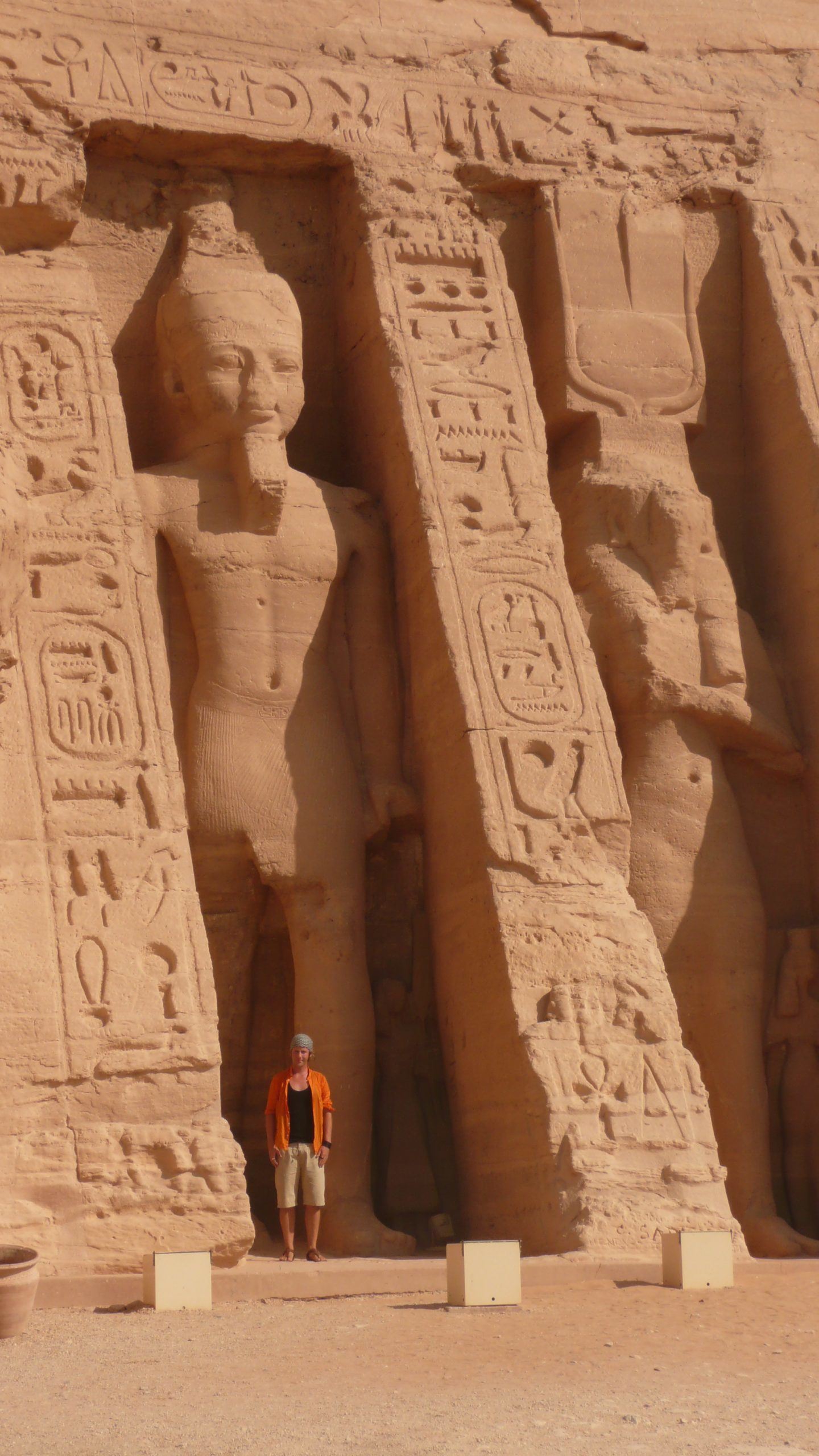
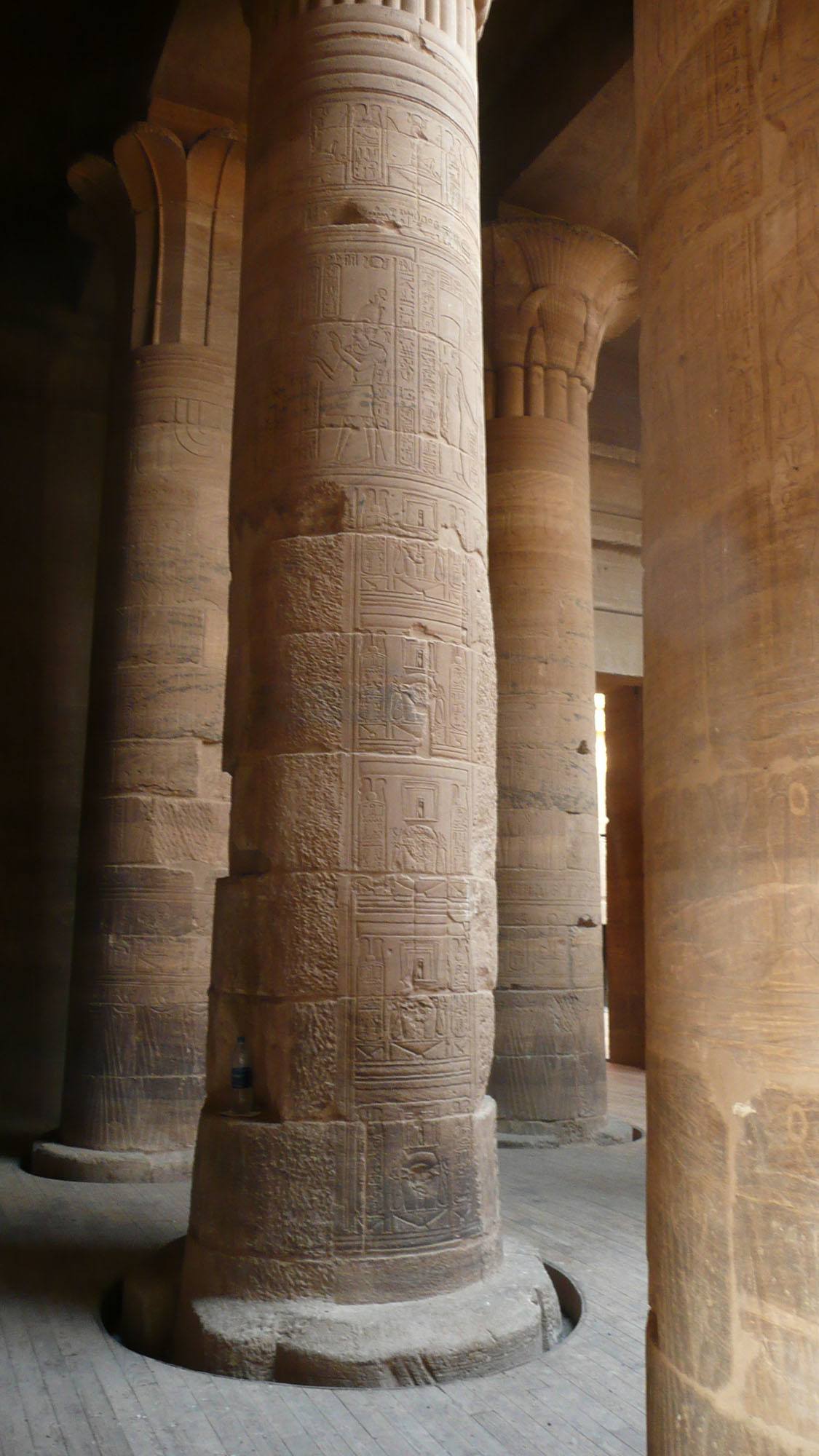

I stood in awe before the entrance to the Great Temple of Ramases II, wholly impressed by the magnitude of its dimensions and colossal nature of the four giant statues sitting at the entrance, observing the traffic moving through. The magnetism continued as I walked through the interior, hieroglyphics and inscriptions covering the walls and columns, telling stories of a bygone world. I couldn't help but be drawn back in time, to an ancient world of wonderment, exoticism, mystique and prowess.

Most visitors visit Abu Simbel on an organised tour from Aswan.
If you’re looking for a convenient way to visit, consider a Semi-Private Day tour to Abu Simbel that makes the logistics easy and provides some local insights into this magnificent site.
➡ Click here to book your tour
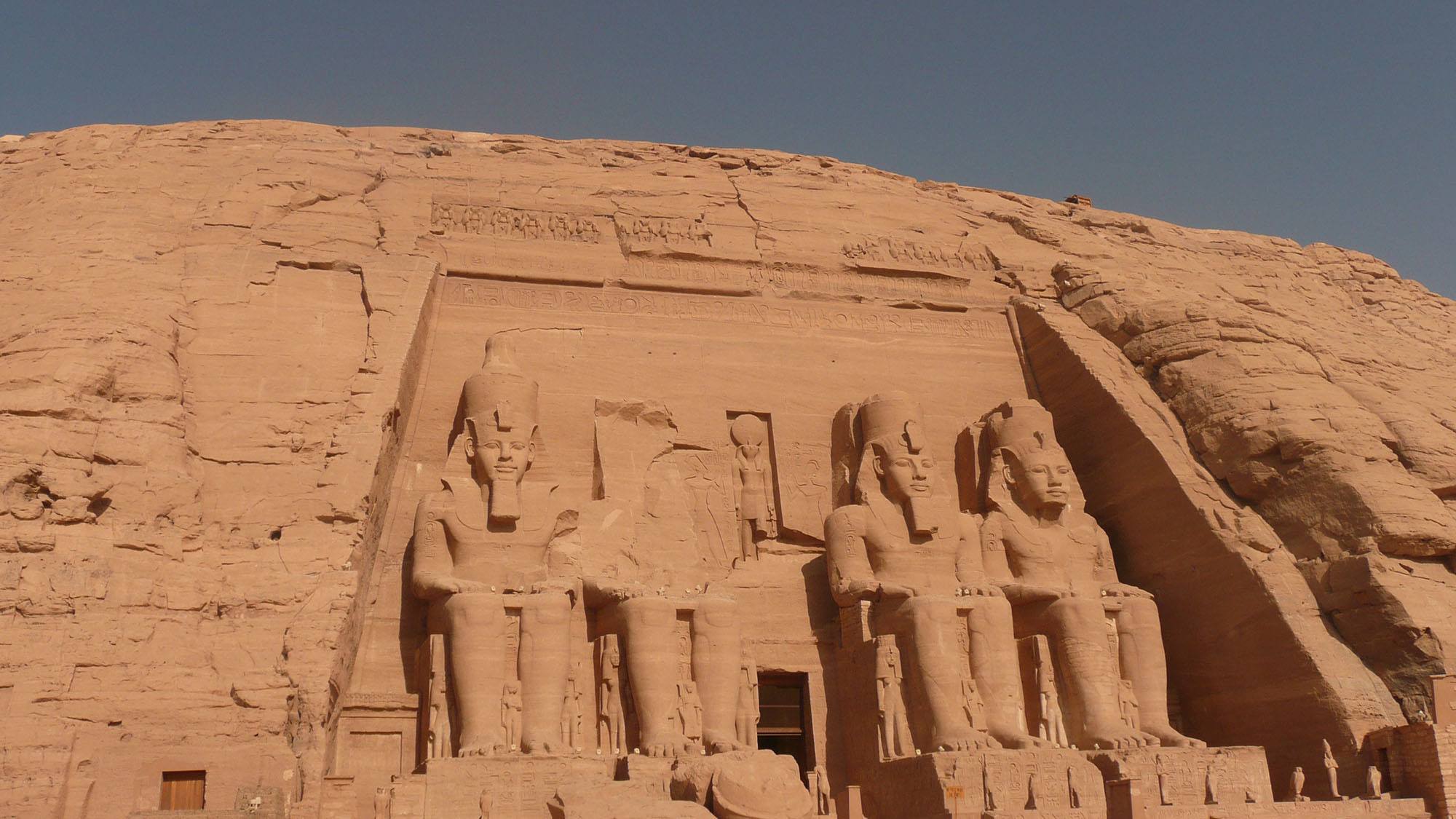
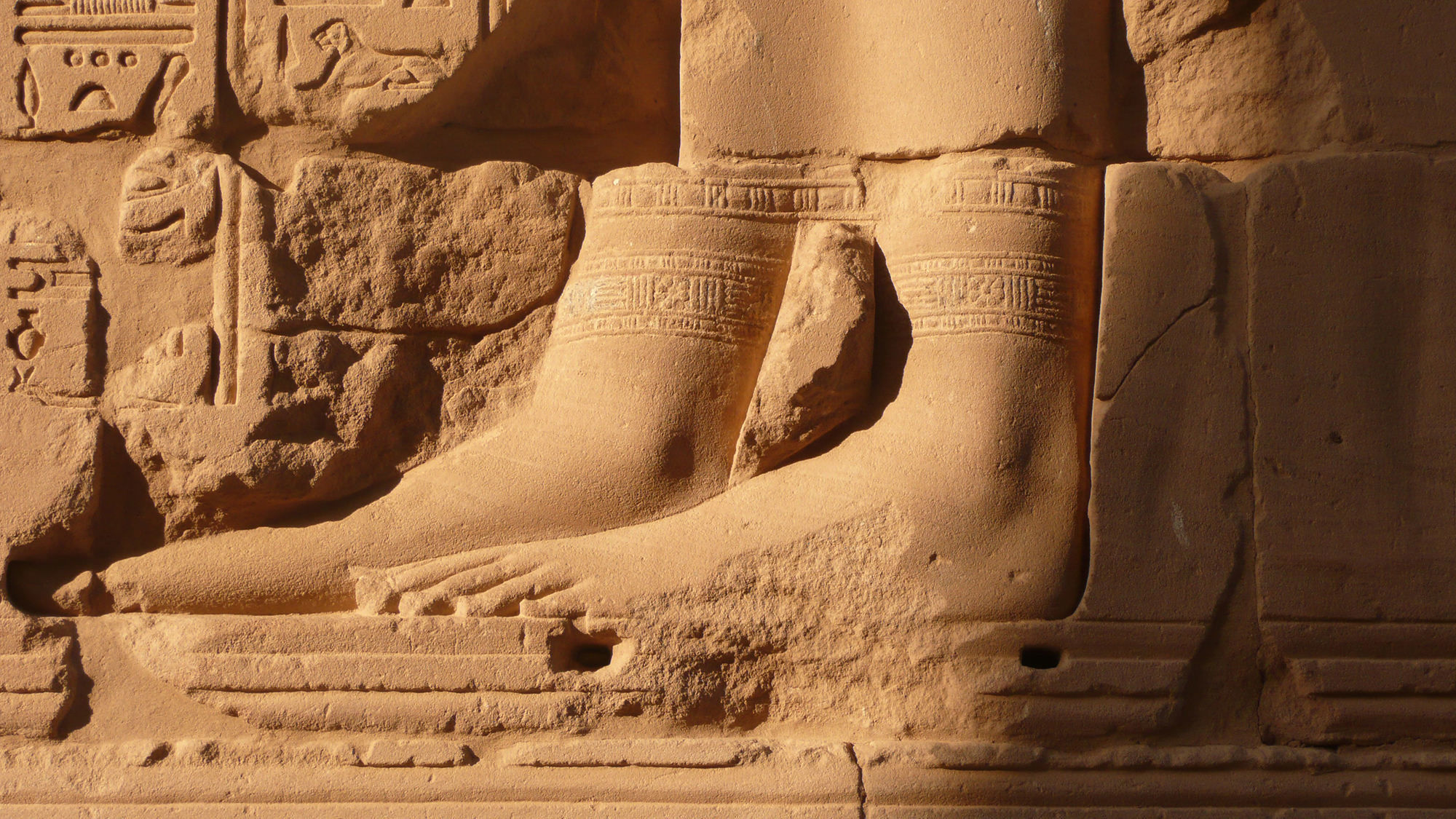
Minivans depart Aswan early in the morning and return after a several-hour visit at Abu Simbel. The driver of the minivan in which I was placed was reckless, hurtling along the road at nearly 200km/h. He fell asleep at one point which was truly fear-inspiring, more so than the eight eyes watching me as I entered the temple.
Ask staff at your respective lodgings about road and driving safety standards when booking tours through them.
Recommended Length of Stay in Aswan
Aswan may not be as historically well-endowed as Luxor or Cairo but it's nonetheless interesting to visit. Visitors will often only stay one or two days but I'd recommend staying between three and four days, to truly appreciate the Nubian spirit and way of life. In fact, you could opt to stay in the town of Abu Simbel for one night for a really unique experience.
Accommodation - Staying in Aswan
Budget: Go Inn Backpackers
Go Inn Backpackers in Aswan has that laid-back, friendly vibe that solo travellers crave, with plenty of spaces to hang out — from the terrace to the garden. It’s just a short walk to the Nubian Museum, making it a great base for exploring Aswan’s sights. Plus, if you’re up for some evening fun, there's a nightclub on-site and helpful staff who can sort out local tours.
Mid-Range: The Zen Wellness Resort
The Zen Wellness Resort strikes a unique balance between luxury and affordability, boasting five-star amenities without the sky-high price tag. While some rooms can run into the thousands, you can find quite a few options in the $100-$250 range that still offer incredible comfort and style. The resort is nestled in a tranquil setting, perfect for relaxation after a day of exploring Aswan.
High-End: Sofitel Legend Old Cataract
For a truly luxurious experience, Sofitel Legend Old Cataract Aswan is hard to beat. Set in a stunning historic building overlooking the Nile, this hotel boasts elegant rooms, a gorgeous pool, and top-notch dining options.
Food - Eating in Aswan
There’s no shortage of places to eat in Aswan, but be aware that many restaurants operate with two menus — one for tourists with inflated prices and another for locals, identical except for the numbers on the page. Some places may also add a “tourist surcharge” to the final bill. I’d recommend asking upfront if these apply to avoid any unwelcome surprises when it’s time to pay.
For reliable recommendations, ask the locals or check with your accommodation. In my experience, chatting with locals often led me to authentic, affordable spots with the best flavours of Nubian and Egyptian dishes — without the tourist markup.
Here are the top three must-try dishes in Aswan:
- Ful Medames – A hearty dish of slow-cooked fava beans, usually enjoyed for breakfast or lunch, seasoned with olive oil, lemon, and spices. It’s an essential Egyptian staple and often found at small local eateries.
- Sayadeya Fish – A flavourful fish dish made with Nile perch, served with spiced rice and a tangy tomato sauce.
- Karkade (Hibiscus Tea) – A vibrant, refreshing drink made from dried hibiscus petals, enjoyed hot or cold. It’s a popular choice in Aswan and a must-try for its unique, slightly tart flavour.
Transportation - Getting Around Aswan
On Foot
Aside from trips to the west bank of the Nile, the High Dam and Abu Simbel (which were reached by minivan as part of day tours), I moved around on foot.
The city is compact and quite safe so moving around on foot during daylight hours is generally hassle-free, so long as you're sensible, avoid being flashy, dress conservatively and use appropriate sun-protection.
By Taxi
Taxis are a valid means of transport and they can also be used to get you to the key attractions if you don't wish to go on a tour. Negotiate with the driver but ask at your lodgings for an appropriate price before getting into a heated debate.
By Horse-Drawn Carriage
You will see them dotted about and they are a viable means of transport, too. It may take you longer to get to your desired destination but you'll be arriving iconically, via a mode of transport of yesteryear.
By Ferry, Motorboat or Felucca
If you decide to visit the attractions on the west bank of the Nile, then you'll need to go via ferry, motorboat of felucca - the choice is yours. The price for the ferry, when visiting, was set at 5 LE. However, you'll need to negotiate with the motorboat and felucca operators for a fair price. If they see a foreigner coming, the price will automatically inflate somewhat.
Transportation - Getting to Aswan
By Air
Aswan International Airport is a 30-40 minute drive from the city centre. There are a couple of airlines that operate domestic flights between Abu Simbel, Luxor as well as Cairo and Aswan. The airlines include:
- EgyptAir
- LotusAir
- NileAir
By Train
There are regular and daily services from Cairo and Luxor to Aswan on Egypt's passenger train service which runs along the Nile. It's how I got from Cairo to Aswan, overnight. Trains depart Cairo's Ramsis station and both first and second class sleepers are available.
If you wish to travel during the day, then you'll need to buy a ticket at a ticket machine or on the train - foreigners are technically not permitted to travel on day services.
The journey between Cairo and Aswan take 13 to 14 hours. Between Luxor and Aswan, it's between 3 and 4 hours.
By Bus
There are bus services that operate between Cairo as well as Hurghada and Aswan at various times of day. They are old, rundown and often dirty. They're not recommended as a means of travel between these cities. Foreigners are also sometimes not permitted to travel on certain routes, hefty fines applicable if they're found by authorities. Using the night train or flying is the preference.
- In Cairo, buses leave from Al-torjoman station at 5pm and arrive the next morning. It costs 140 LE
- In Hurghada, buses leave for Aswan from Zahran station at 10pm and arrive the next morning. The company is called StarJet. However, foreigners are not permitted to travel on this service as of 2016.
By Felucca or Cruise Ship
The journey from Luxor to Aswan via felucca or cruise ship takes 4 nights, floating merrily along the Nile. In reverse (which is the direction I took when departing Aswan), it takes 3 nights.
It's an iconic experience, as great as visiting the mummy of Tutankhamun or the Giza Pyramids, and should be included on your itinerary (in either direction).
THE NILE (النيل) (Days 9-11)
There are few – if any - more unique Egyptian experiences than moving with the north-bound current along the Nile on board a felucca.
I spent hours lounging on woven rugs, blankets, and cushions, the wind gently brushing against my sunburned cheeks, as I watched life unfold on the river’s banks: men bathing in tidal waters, some washing clothes, children playing, and camels standing at the edge, drinking from the Nile. Used for centuries as a viable means of transport – propelled by wind in canvas sails, the wooden vessel is iconic.
Manned by mostly Nubian crew, setting sail on a felucca is akin to stepping back several centuries - a journey through the Nile’s history. A trip from Aswan to Luxor is slow, languorous even, the rhythmic sound of tidal waters lapping the wooden base a needed escape from the mania that exists elsewhere in the country.
For me, living on board a felucca for three nights was one of the true highlights of Egypt – right up there with visiting the Giza Pyramids and the mummy of Tutankhamun.

Here are a few things you can expect and others you need to know prior to hopping on board and setting sail.
Sailing On a Felucca ("Upstream") Between Aswan and Luxor
The journey I took commenced in Aswan, introductions between the crew, the two other passengers and I made on the banks of the Nile. I’d been fortunate to befriend a spirited soul in Cairo who put me in contact with his Nubian friend – the captain of a felucca – in Aswan. Prices were set and the itinerary planned accordingly.
Unhurried, we moved northbound, sailing with the current through the day, stopping at a new location on the banks before 8pm each night to sleep. Feluccas aren’t permitted to traverse Nile waters after this time.
During daylight hours, all six of us became acquainted, chatting, laughing, swimming and eating together. The crew were gregarious and inclusive, at one point trying to teach us how to rig a sail, a task at which I miserably failed.
Food was prepared on board and, although basic due to minimal cooking facilities, I was filled to satiety at every meal. I did grow a little tired of falafel and pita towards the final day, though.



The felucca was spacious, ample room for all 6 bodies on board to lounge about, relax and have some personal space if required. Formally, carriage capacity is restricted to 8 people, a minimum of 6 required to set sail.
Throughout the day, we made stops at various points along the bank of the Nile, ample time to use a toilet (which meant digging a hole in the sand if required), go for a stroll and meet some locals if they happened to be nearby. It was also an opportunity to go swimming.
There are no crocodiles and the current is apparently fast enough (in most places) so that schistosomiasis is not a problem. However, I didn't want a parasitic infection while on board a boat without facilities so I opted not to swim.
Do your research and decide if you wish to take the risk.
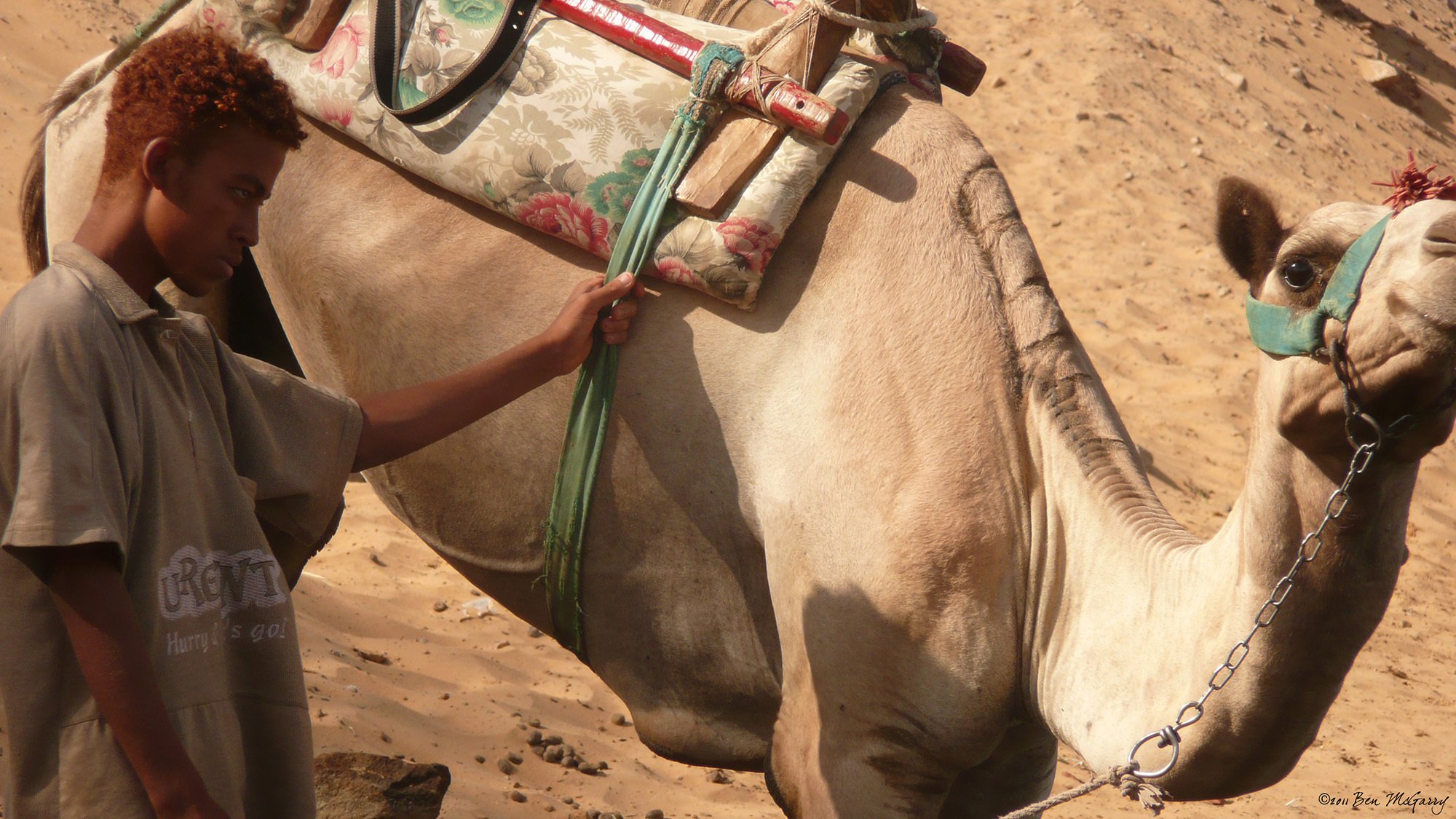
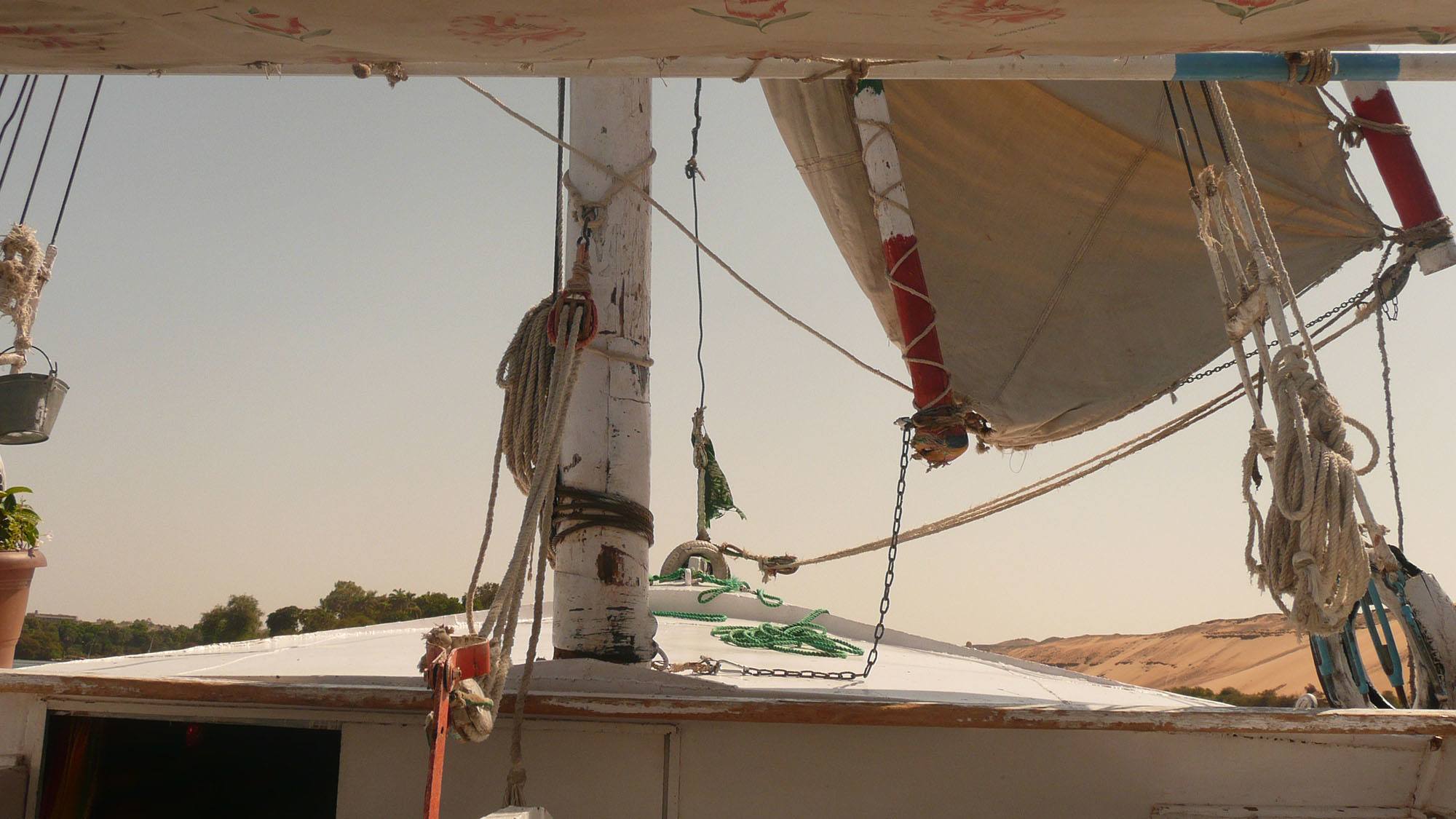
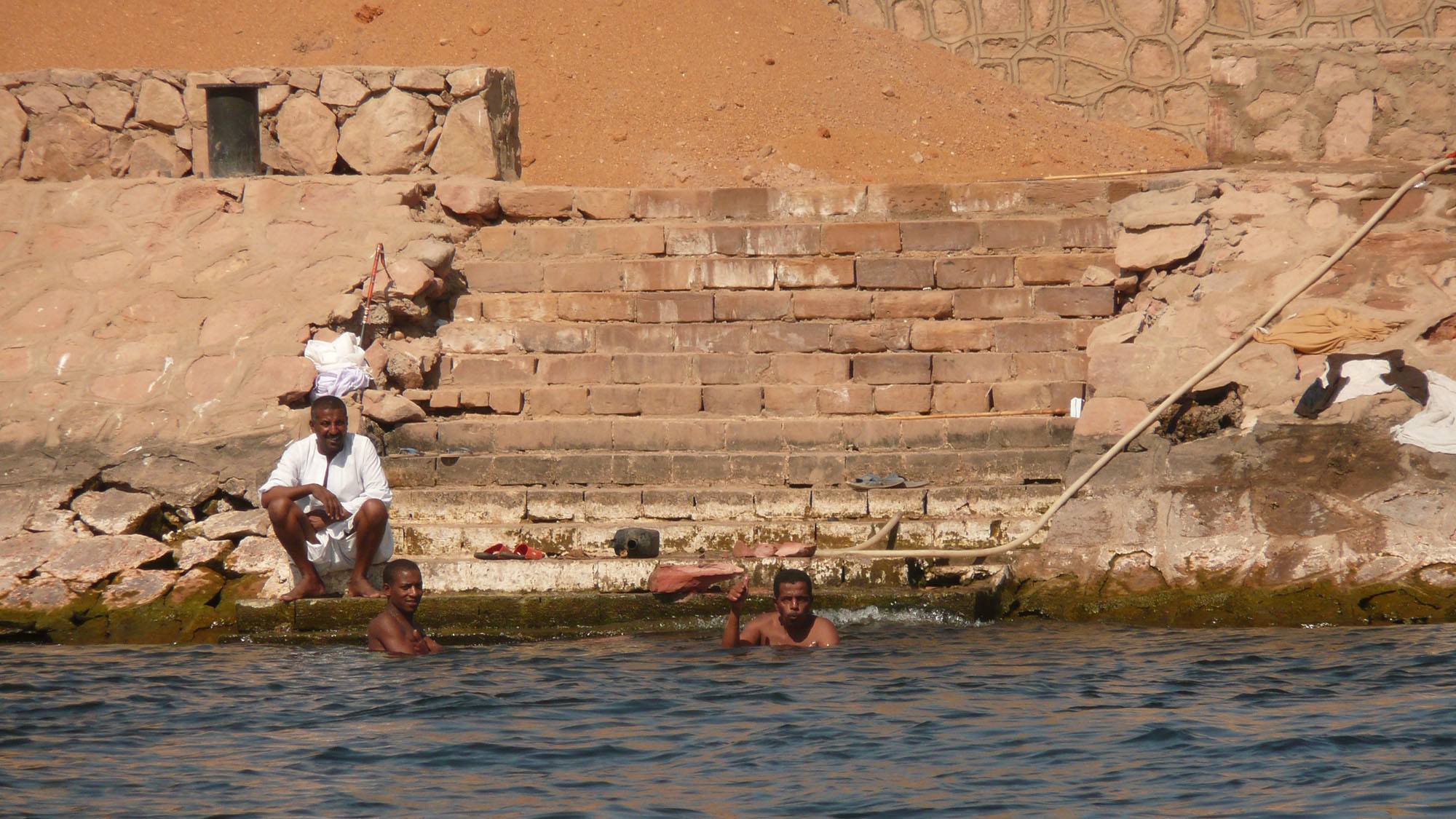
Overall, it was an engaging, entertaining and iconic journey, a trip through time I'm so glad I took.
Felucca Practicalities
- Do relevant checks to ensure the felucca is of sound and safe quality and all key equipment is present before signing up with a captain. There should be blankets, a sunshade and cooking/eating implements
- Ensure food is part of the package/price otherwise you'll be left feeling hungry by the end of day one. Take snacks with you as you might get hungry between meals
- Pack toilet paper and be mentally prepared to go to toilet overboard or find a private space when the felucca docks. There are likely to be no available toilets, at least not through the day. They'll be easier to find at night as feluccas tend to dock near villages or towns
- If you're not used to sharing intimate spaces with strangers, ask to meet the other passengers prior to setting sail. It may make things less uncomfortable during the journey
- Ensure you know where you're being dropped off and have transport arranged to collect you at the final destination if required
- Bring anything you think you'll need with you as you'll not be able to access commodities while moving along the Nile. Consider things like a sleeping bag or silk liner, insect repellant, sunscreen and lots of bottled water
Recommended Length of Felucca Sailing Trip
It's possible to take short trips (for several hours up to half a day) on a felucca from various spots along the Nile. This is recommended if you don't fancy being on board overnight with no toilet facilities, so you don't miss out on the experience.
If you want to dip your toes into the experience without committing to a multi-day trip, consider a sunset felucca ride in Aswan that will still give you a taste of this iconic experience.
➡ Click here to book your tour
Most journeys between major destinations are 3 nights in duration, particularly between Aswan and Luxor (as you'll be moving with the current, not against it). Journeys in the opposite direction take longer.

Shorter trips can be negotiated particularly if you can arrange land transportation from a drop-off point to your desired final destination, be it Aswan or Luxor.
To truly unwind and get into the swing of life on the Nile, I'd recommend spending at least 2 nights on board. 3 would be ideal.
Accommodation - Staying on a Nile-Bound Felucca (Sleeping Facilities)
As already mentioned, feluccas are not permitted to be mobile after 8pm. Therefore, you'll be sleeping on board but the felucca will be docked somewhere along the shores of the Nile.
There are no beds, per se, only thin mattresses, rugs and cushions on which to sleep. The space is communal so expect to be hearing all sorts of noises through the night from fellow passengers.
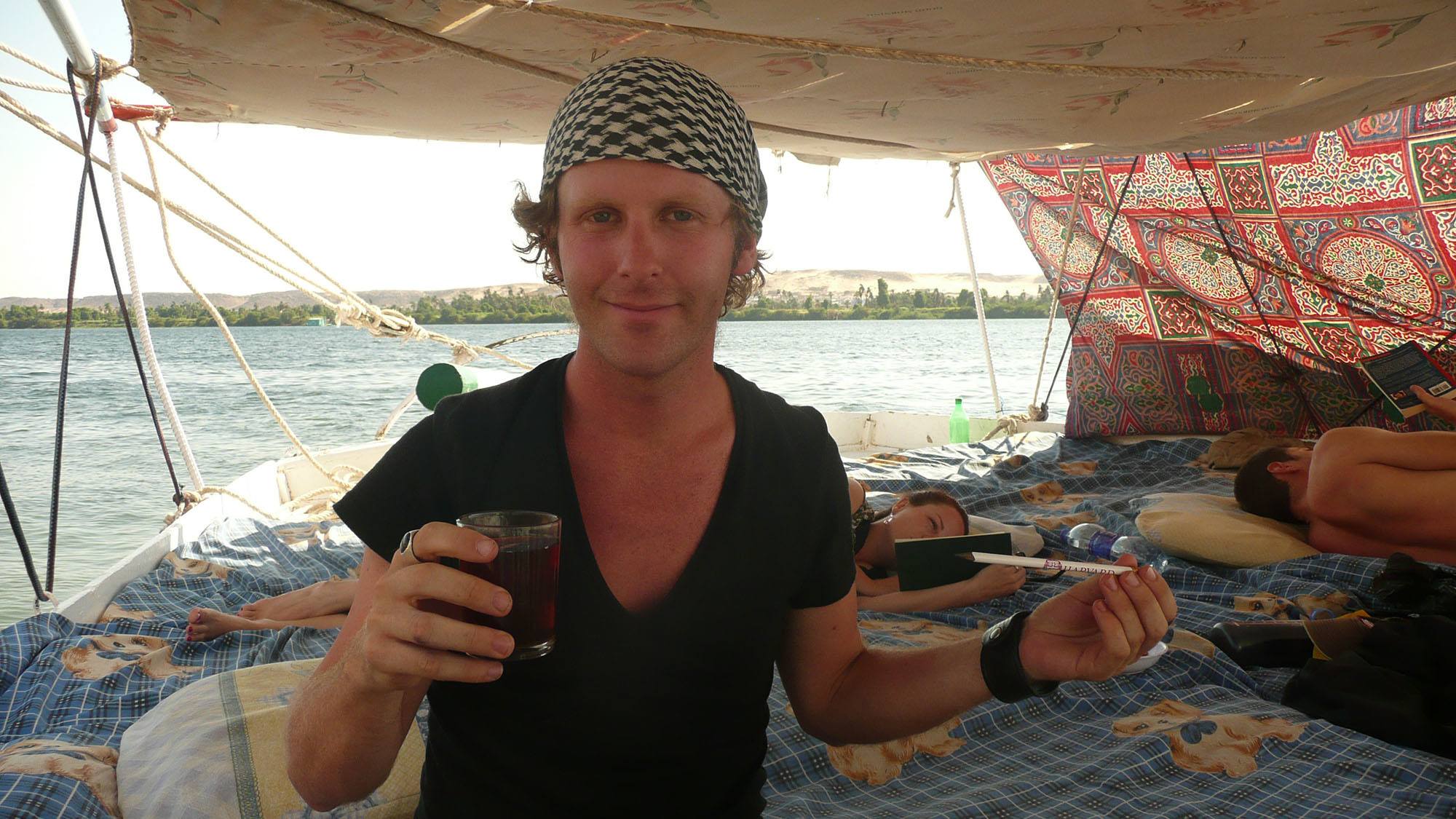
As there are no toilets on board, evenings are a good time to use facilities that'll be indicated nearby. The crew will escort you to a bathroom so that you don't need to squat, in the dark, on the bank of the Nile.
Food - Eating on a Nile-Bound Felucca (Quality and Type)
As there are no real cooking facilities on board (given that the vessel is made of wood which doesn't mix well with fire), meals are basic, comprising staples such as falafel, beans, pita and hummus. Ingredients are usually sought fresh each morning while the felucca is docked, prior to setting sail for the day.
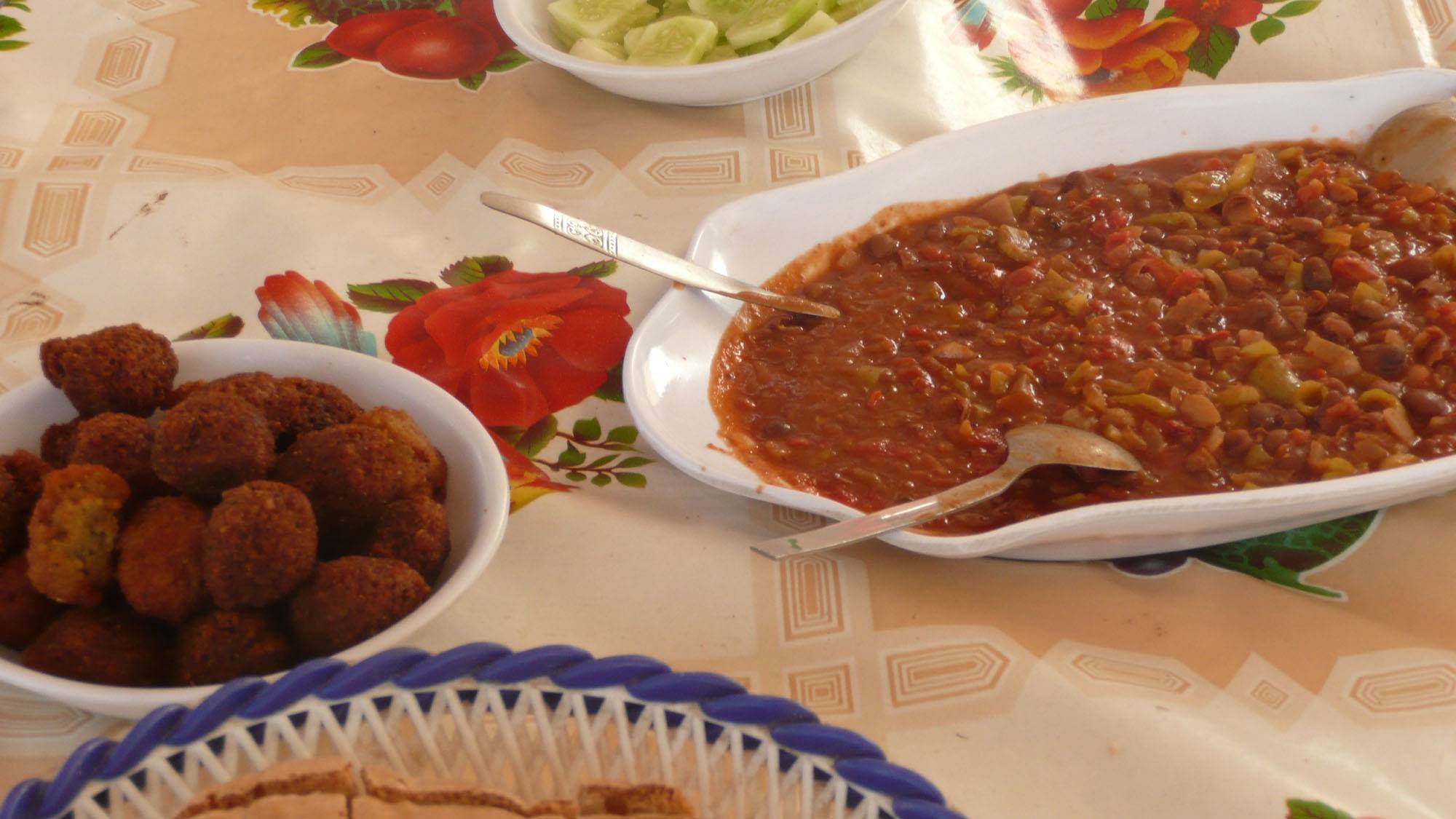
The crew, with your assistance if interested, prepare the food on board.
Save this itinerary (and guide) for future reference!
LUXOR (الأقص) (Days 12-15)
It's where history really comes to life, a treasure chest of antiquity from ancient Thebes.
Luxor is a living open-air museum and visiting means making a date with relics that have survived for thousands of years. It's an extraordinary place, overwhelming, even: knowing where to start exploration can be confounding. At least there's no shortage of options: from Karnak on the east to the tombs on the west bank, there are so many riches seeing them all would take a lifetime.
Careful planning is needed as is a bit of tenacity and ruthless decision-making (unless, of course, you have an eternity to pass in Luxor).
If you're looking for a convenient way to cover most of the major sites in one day, consider a Luxor Day Tour To East Bank and West Bank. Although initially advertised at $23 (for the car and driver only), the total cost can rise to around $250 or higher once entry tickets are included, but it offers a comprehensive experience.
➡ Click here to book your tour
Here are a few of the key sights that warrant your attention and could - or should - be inserted into your itinerary.
Sights to See and Things to Experience in Luxor
Karnak aka the Karnak Temple Complex
Situated on the east bank is a complex of gigantic proportions, complete with obelisks, temples, pylons and sanctuaries, all constructed to venerate Theban gods and glorify pharaohs.

The most important place of worship under Egypt's New Kingdom, Karnak is living testimony of how the Egyptians of old felt about religion and spirituality. It covers a swathe of earth, 2 square km to be precise, a site that requires multiple visits to explore in detail and appreciate.

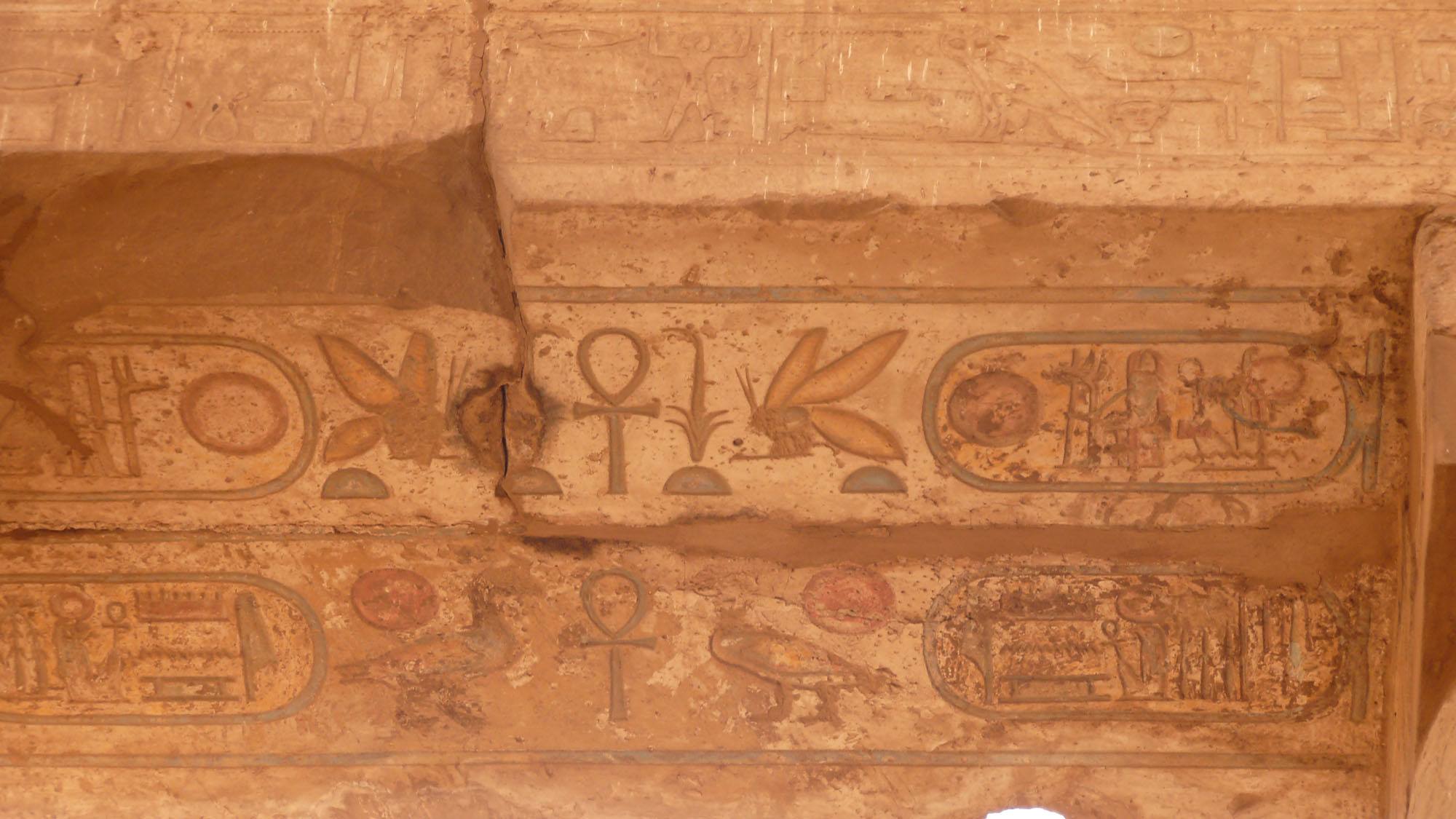
The most prominent features include the Temple of Amun and the Temple of Amun-Ra, the latter complete with columns shaped like papyrus. You need not necessarily learn the history of every key feature to truly appreciate the site: a wander alone around the complex will imbue a sense of awe. Take your time, get a guide if you wish and try to conceptualise life in the 18th, 19th and 20th dynasties unfolding before your eyes.
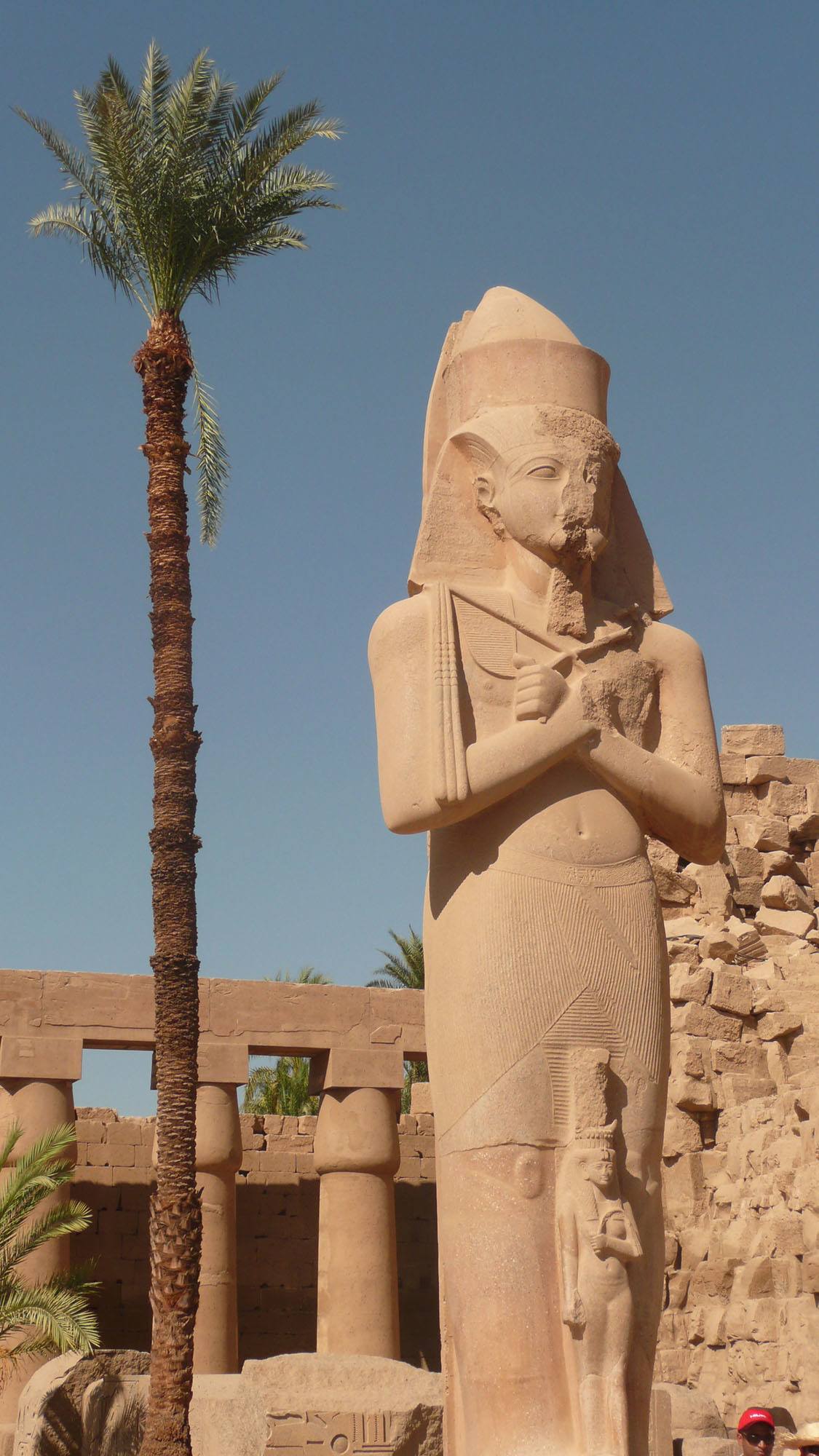
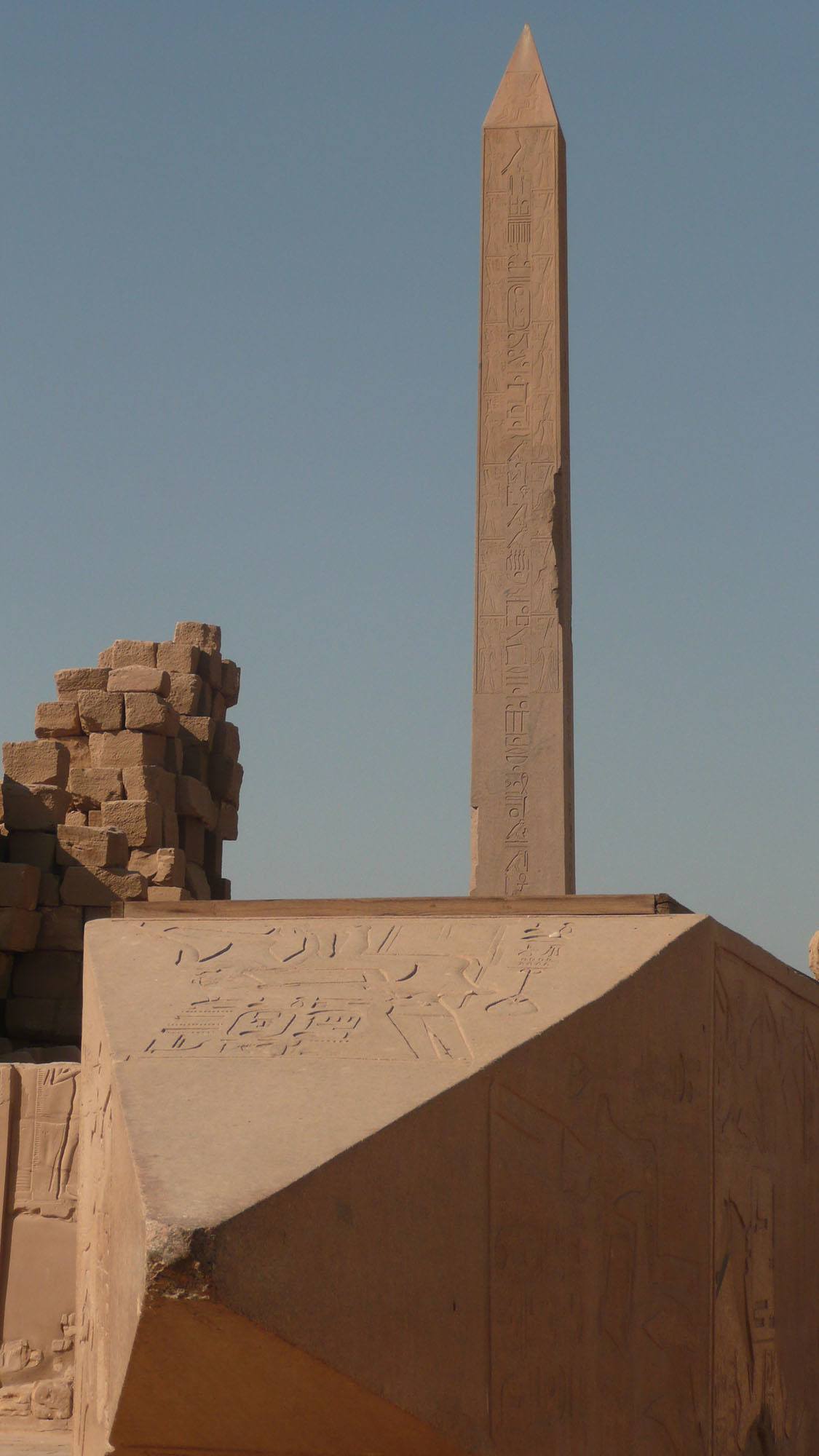
I visited in the afternoon when the structures were bathed in glorious tones of yellow and gold from the setting sun.

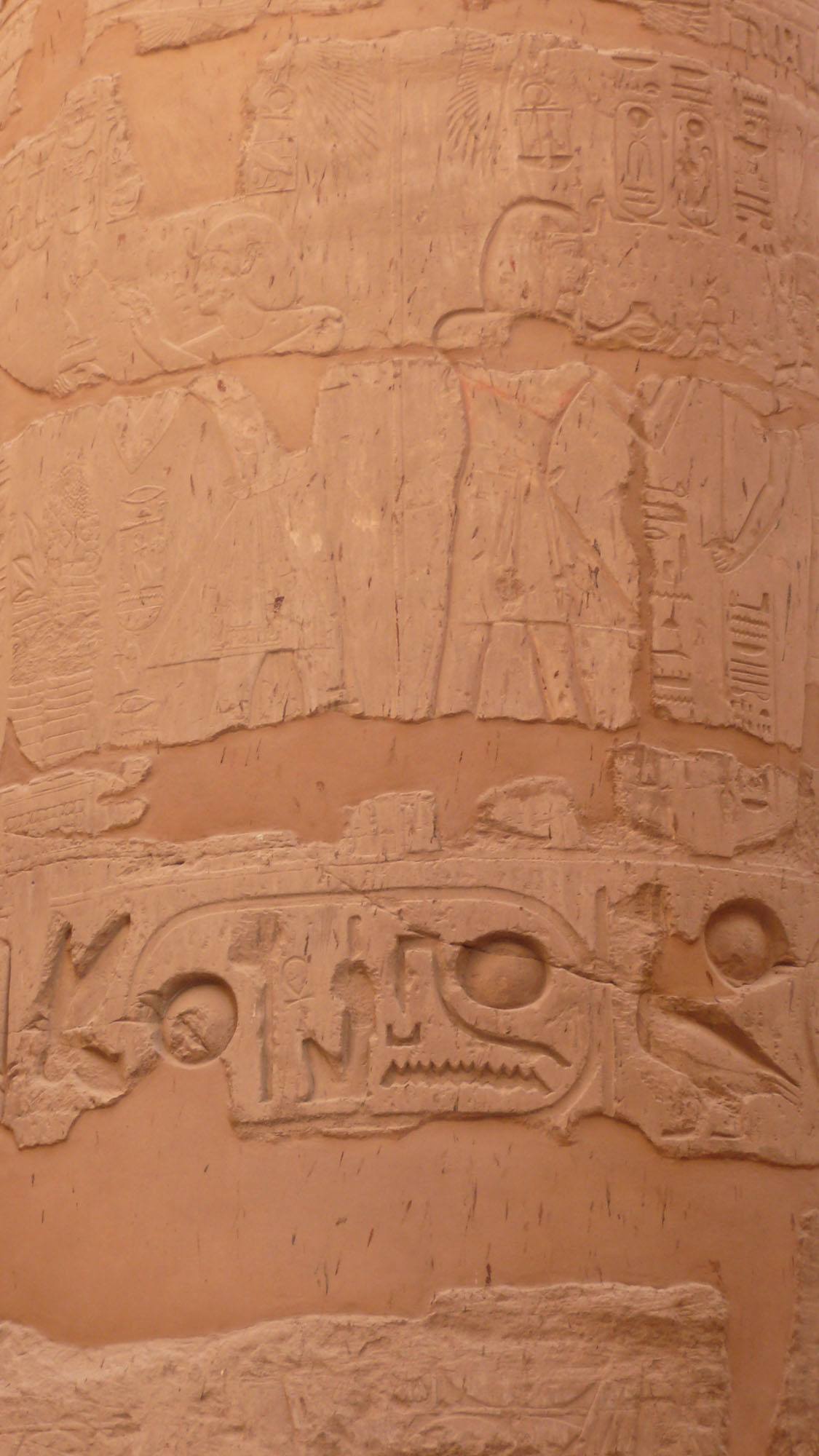
I'd recommend going in the morning, though, on two consecutive days to avoid the masses and get an opportunity to appreciate the magnitude of the site, avert the risk of midday-induced heatstroke and see more than you might by rushing through in one go.
Valley of the Kings
The Valley of the Kings is where 63 royal tombs can be found, a burial ground on the west bank of the Nile, a site cherry picked by the pharaohs of the New Kingdom between 1550 and 1069 BC. If you really want to feel as though you are part of ancient Egypt, then taking time to move your eyes along the mummified corpse of a pharaoh should do the trick.
An entry ticket provides access to three tombs. However, if you want to see the tombs of Ay, Tutankhamun, Seti I or Ramses VI, as did I, then you'll need to purchase an extra ticket.
Take sun protection and plenty of water as the road into the site is inclined, dry and very hot particularly if you are not visiting during the winter months. For 4 LE extra, you can take an electrical train between the visitors centre and the tombs, a good idea during the summer months - it's money well-spent.
Note that photography is forbidden in all tombs. Mind you, it didn't stop the man guarding Tutankhamun's corpse from requesting a bribe in exchange for a photo of the mummy. As tempting as it was, I resisted, one due to ethics and two due to the damage that's already been incurred over the years, from human sweat (thanks to mass tourism), floods and treasure hunters. These relics of the ancient world need to be preserved for future generations to see.
Luxor Temple
In the heart of modern Luxor, the temple is another striking feature descendent of the ancient world, a relic constructed under the watchful eye of pharaohs in the New Kingdom. It was primarily used as a means of celebration, a joining of statues from other temples. Parts of the structure were developed by Alexander the Great and the Romans, the latter of whom enclosed the temple with a fort.
It’s perhaps not as extensive as Karnak but it’s nonetheless interesting, a walk back in time particularly the deeper you penetrate inside the temple. Every detail is significant so get yourself a good history book or guide who can fill you in on the details as you walk around the complex (if you’re interested in learning about the lives of the ancient Egyptians in terms of worship).
If you can, visit at night when the temple is romanticised by ambient lighting. I visited early in the morning to avoid the crowds that come during the day.
Temple of Deir al-Bahri (Queen Hatshepsut’s Temple)
One of Egypt’s first female rulers, Queen – aka pharaoh - Hatshepsut was a mighty woman, regal, intelligent, devoted and fair. Beneath the cliffs of Deir el Bahri on the west bank of the Nile is where you can visit her crowning achievement, a temple (known as Temple of Deir al-Bahri or Queen Hatshepsut’s Temple) with pillared porticoes, beautiful reliefs and an iconic spot, amid the desert landscape and beside the Temple of Mentuhotep II – a signature of power, confirming her unique position among the kings.
To give herself credibility, I guess, in a powerful kingdom mostly dominated by male rulers, she recreated her image by means of the statues through which she would be portrayed to others: they gradually evolved to resemble a man’s body that was dressed in pharaonic attire (with a beard to boot). It was a true symbol of power, a legacy she hoped would endure following her death. Although subsequent leaders attempted to destroy them, the temple remains and is a true masterpiece, one of the most beautiful in the world per the opinion of many scholars and historians.
It really is a masterpiece, one I thoroughly enjoyed visiting in the mid-afternoon. It does get hot so ensure, like with all of the sites listed here, you have water and appropriate sun protection.
Luxor Museum
Filled to the brims with beautiful artefacts, Luxor Museum - established in 1975 - is home to 4000 years of Egyptian history. It's also where you'll find various insignia from Tutenkhamun’s tomb. Some can get history-overload-cum-fatigue while in Luxor, given the immensity of sites and artefacts to see. Why should you visit the museum, then? The jewellery, canopic jars from Mothucalled Pady-Imenet's tomb (meaning the internal organs from the body) and the artwork - it's all very impressive, or at least it was to me.
Opening times are variable depending on the time of year. Tickets are 70 EP for adults and 35 EP for students. The museum can be found on Center Corniche Avenue, in a two-storey building, overlooking the west bank of the Nile.
Medinet Habu
The temple, built to commemorate Rameses III - fronted by a village with mountains as a backdrop - can be found on the Nile's west bank and is a key symbol of Thebian economic life. It was filled with administrative buildings, workshops and rooms for priests to sleep and rest. Medinet Habu was still in use during the 9th century AD, a centrepiece of Christian worship.
Enter through the Syrian Gate, stay to the left and go upstairs. It's here that you'll find some great views of the land. Take your time, wander about and imagine yourself as an official several thousand years ago moving with others through the lively and spirited hallways, rooms and doors.
Valley of the Queens
It's here where you'll find 75 tombs, each belonging to a Queen who reigned during the 19th and 20th dynasties of ancient Egypt. There are only four open for viewing, including those of Titi, Khaemwaset, Amunherkhepshef and Nefertari. The site is slightly south-west of the Valley of the Kings. Dubbed Ta-Set-Neferu, meaning 'place of beauty', it's easy to see why the name was coined given the surrounding landscape.
The most prominent tomb is that of Nefertari (which was closed when I visited, prior to 2016), one of the most respected women in ancient Egypt, the wife of Ramases the Great. A separate ticket is required to visit her tomb.
Recommended Length of Stay in Luxor
You could stay a lifetime and still fail to see every crevice and fissure of history that's home to Luxor. I stayed four days and managed to visit a decent amount of sights without feeling too rushed. You could squeeze things into three days but you may get fatigued and stop appreciating the immensity of that which you're seeing.
Accommodation - Staying in Luxor
Budget: Nile Castle
If you're looking for a budget-friendly gem, Nile Castle is an inviting choice right on the banks of the Nile, nestled on the West Bank. With its comfortable accommodations and stunning river views, this spot feels like a hidden oasis. It’s the perfect base for your Luxor adventures, allowing you to explore the area while soaking in a relaxed vibe.
Mid-Range: Djorff Palace
Djorff Palace is a delightful option that sits comfortably in the mid-range category, though its prices often flirt with the higher end, typically between $200 and $300. This charming hotel combines modern amenities with traditional Egyptian aesthetics, creating a warm and inviting atmosphere. Guests rave about the spacious rooms and lovely pool area, perfect for lounging after a day of exploring Luxor's ancient treasures.
High-End: Al Moudira Hotel
Nestled a bit further from the river, Al Moudira Hotel is a stunning 4-star property that truly captures the essence of Egyptian aesthetics. The hotel is adorned with beautiful arches, intricate mosaics, and lush gardens, creating a serene oasis away from the hustle and bustle. While it may not be right on the Nile, the tranquil atmosphere and unique charm make it a wonderful spot.
Food - Eating in Luxor
Luxor has plenty of dining options, from casual street food to sit-down restaurants. Be mindful of dual pricing, as some places have separate menus for tourists and locals, often with a higher price tag for visitors. Also, it’s common for a surcharge to appear on your bill unexpectedly, so it’s best to ask in advance if any additional charges apply.
Here are some specific recommendations for where to eat in Luxor:
Al-Sahaby Lane
- Located in the heart of Luxor, this rooftop restaurant offers both Egyptian and international dishes with great views of the Nile and Luxor Temple. Try their traditional tagine or koshari – a local favourite with rice, pasta, and lentils.
Sofra Restaurant & Cafe
- For a more authentic Egyptian experience, Sofra is a must-visit. The ambiance here is warm and inviting, and the menu includes Egyptian classics like molokhia (green soup with leafy greens) and feteer (Egyptian pie).
Aisha Restaurant
- This family-run restaurant is a bit of a hidden gem. The dishes here are simple but flavourful, with options like grilled kofta and baba ghanoush. The owner is often around to share stories, making for an intimate dining experience.
Transportation - Getting Around Luxor
On Foot
I walked to, from and between the key tourist sites on the east bank of the Nile and never encountered problems. Touts were pushy at times but no worse than in other parts of the country. I merely smiled, thanked them for their time and, if they persisted, said 'la, shukran', meaning 'no, thank you.'
The heat can be tough so ensure you know where you're going as getting lost is not fun when the sun is bearing down on your head.
By Bicycle
Riding around Luxor is in fact a great way of moving, getting up close and personal with locals, having the freedom and flexibility of moving at your own pace and avoiding paying inflated prices for other means of transportation. There are numerous bike shops on both sides of the river but it's perhaps best to rent one on the east - the metropolitan side (where you find all the hotels and restaurants). They can be taken on boats between the two banks of the Nile and left at the entrance to sites (so long as you have a chain, lock and key).
Ensure you check the quality of the bike you're going to hire before paying any money, which should include the quality of the tyres (such as whether or not they are inflated and relatively new, with tread) and the condition of the brakes and bell.
You'll usually need to leave some form of identification with the owner, a means of guaranteeing safe return of the bicycle. Passports or drivers licences are generally acceptable but opt for the latter: your passport is your life, wherever you are in the world.
By Minibus
Minibuses are by far the cheapest way of moving around Luxor, the form of transportation utilised by Egyptian locals. Here are some general tips about taking minibuses in Luxor:
- they look the same but are marked by different colours on the side depending on the route
- routes are fixed but maps of said routes do not exist - you'll need to ask a local for help
- most of them meet at the railway station
- hail it by raising your arm and looking directly at the driver
- prices are 1.50 LE per person - no negotiating required
- pay as soon as you get on
- merely ask the driver to stop when you are nearing your destination and he will do so
By Taxi
Taxis in Luxor are as ubiquitous as temples and ancient treasures. You'll rarely, if ever, have problems finding one. None of them use meters, though, which can be tricky if you don't know the rate for the route you'll be taking. Find out in advance from a trusted source how much you should pay to get to your chosen destination. Here are a few common routes and prices:
- airport to Downtown Luxor = 50 LE
- short trips (of a few km) within Luxor = less than 20 LE
- return trip east to west bank = 100 LE
By Boat
Moving between the east and west bank is only achievable by boat. Options include:
- felucca (at a price of 15 LE - ensure no 'extra and unrequested' tours are given, otherwise they'll try and charge a bit more)
- ferry (5 LE per person but it only leaves when full)
You'll find both options along the banks of the Nile.
Transportation - Getting to Luxor
By Air
Luxor International Airport receives flights not only from domestic cities, such as Cairo (operated by EgyptAir) as well as from various points throughout Europe.
For flights to Luxor, compare the following websites to locate the most reasonable fares:
By Train
I've provided detailed information above, under the section entitled 'Transportation - Getting to Aswan', regarding the train journey from Cairo to Aswan that stops in Luxor. Please refer to it for details of getting to Luxor from Cairo by train.
By Bus
There are connections between various points throughout Egypt, such as Cairo, Aswan and Hurgharda, and Luxor. However, the train is recommended as a means of transport on any of these journeys for a variety of reasons. Please see the section above entitled 'Transportation - Getting to Aswan' for an explanation.
By Felucca or Boat
This is by far one of the nicest and most romantic ways of arriving in Luxor. Feluccas in particular are a means of transport that have been used for centuries and I encourage you to consider taking one (or another type of boat) between Aswan and Luxor. See the section above under 'The Nile' for more details.
DAHAB (دهب) (Days 16-18)
A haven for solo and independent travellers, Dahab was a world away from the infinitely-beating tourist-filled Red Sea hub of Sharm El-Sheikh. Laid-back and tranquil, getting into the diurnal swing of Red Sea living - and loving - was seamless. It’s what I appreciated most about the low-key boho-imbued coastal town.
Nowadays, the pace has kicked up a notch and, although there are no high-rises, finding an isolated stretch of sand on which to idly laze is less likely. However, the requisite drawcards remain: world-class diving; equally beautiful snorkelling; seaside living; and desert exploring - they're all at your fingertips.
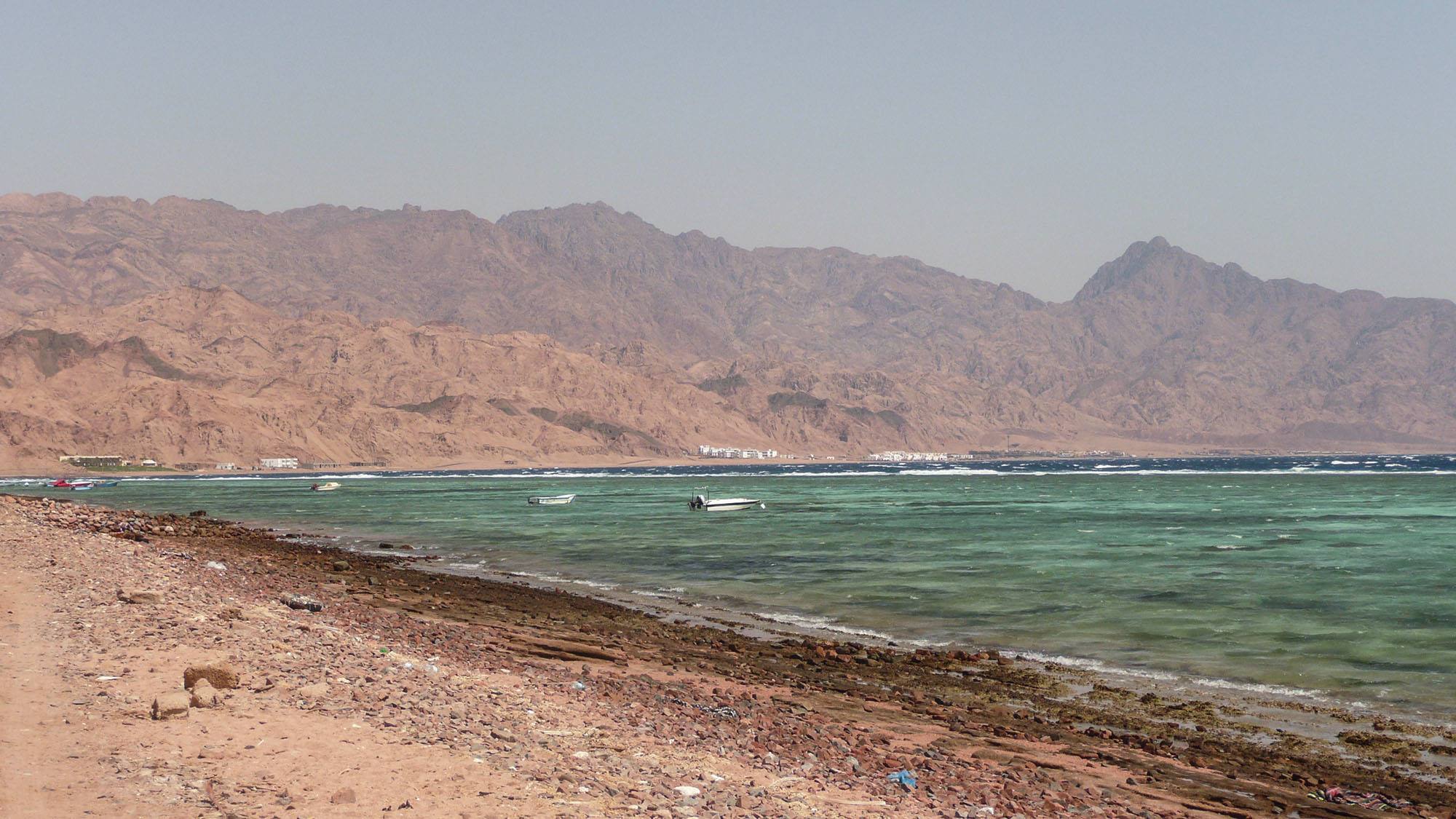
The mellow vibes haven’t altogether disappeared, they just require time to find and appreciate.
And yes, time is a key feature in Dahab, enough required to truly unwind (particularly after having visited Luxor’s multitude of sights) and engage in the following activities.
Sights to See and Things to Experience in Dahab
Eel Garden
Embarrassingly, I’m afraid of the dark and sinister places that lurk beneath the water’s surface. So, I’ve never been diving. Ergo, personal recommendations for squirming around the slimy suckers 1 to 30 metres beneath the surface in the Eel Garden cannot be made. But, it’s not to say you shouldn’t try: the vision of the timid creatures stretching out of holes in the sand would be, without question, otherworldly.
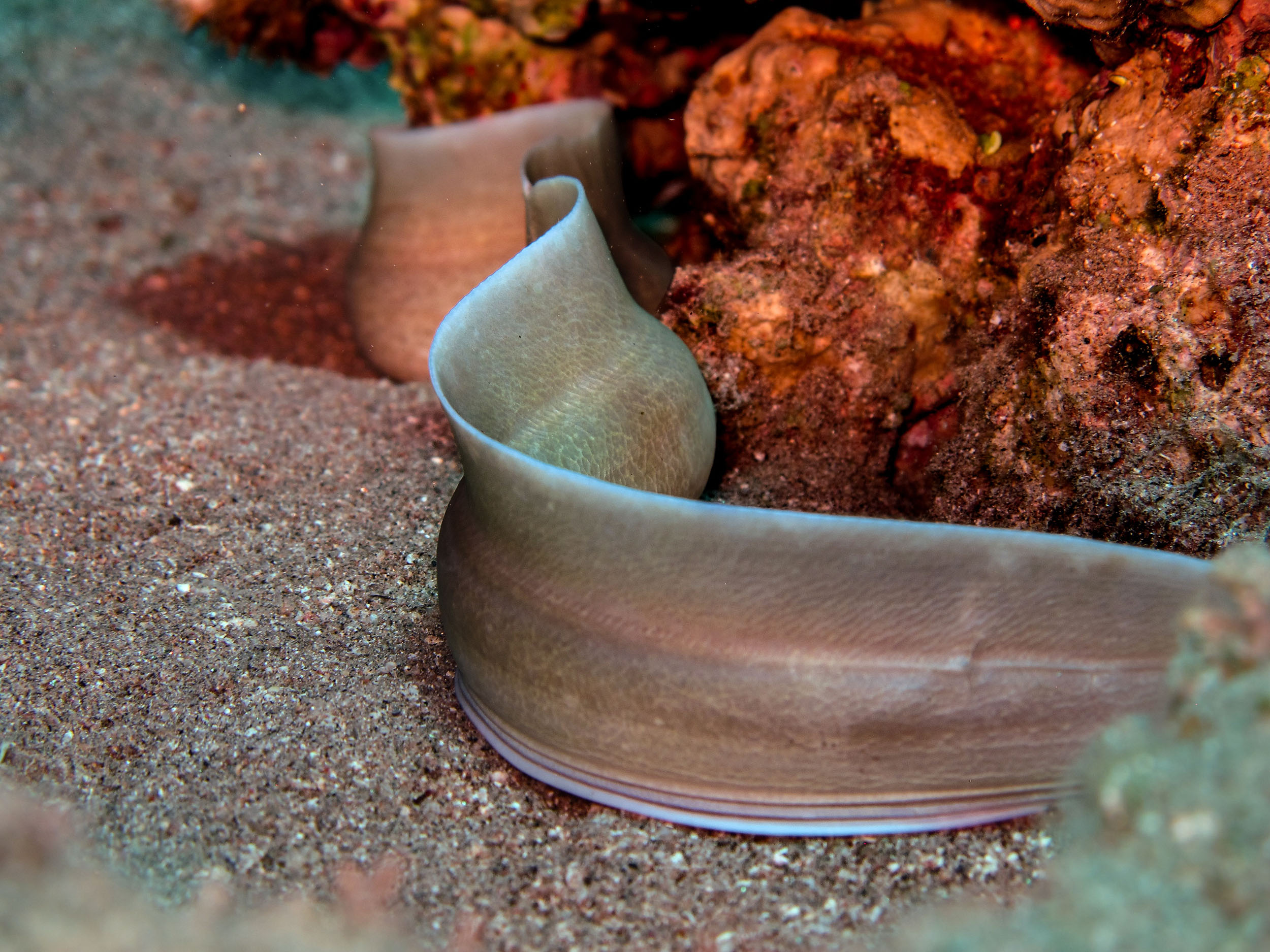
You can snorkel in the area but I wasn’t privy to this information prior to making the decision not to visit. I perhaps would have done so had I known it were possible.
If I one day overcome my fear I will return to explore undersea garden, home to a vast array of marine life.
Note that the photo above is courtesy of a friend.
Friday Market
Commencing the year I visited, the market - held near the Eel Garden on the beach - is where you’ll see the real and original spirit of the area. Dahabians exhibit their lives to the public and provide visitors with a taste of life in the region. Taste your way through local flavours or scoop up a craft to take home as a keepsake. I grabbed a bite to eat then strolled around, chatting to locals in the hot afternoon sun.
The market is held every Friday between 2 and 5 pm in summer and 12 to 4pm in winter.
Laguna (sunset)
Although you’ll likely be going to Mt Sinai to watch the sunrise (detailed below), catching it on the other side - a little closer to home - can be just as magical.


Head to Laguna, located at the southern end of Dahab where kitesurfers often hang out, in the late afternoon. There, you can relax and enjoy the sight of the sky splintering on the horizon, which is truly dramatic. Although, in my opinion, it doesn't compare to the breathtaking beauty of watching the sunrise while sitting atop Mount Sinai.
Recommended Length of Stay in Dahab
Leaving Dahab, for me, was the hard part. If you really want to get into the spirit of idle lazing and seaside living, then I'd recommend spending four days here. However, you could get away with two if you're in a rush so long as you leave one extra night for visiting Mt Sinai to watch sunrise (detailed below).
Accommodation - Staying in Dahab
I stayed at Seven Heaven Hotel and Diving Center. While I found it to be an average experience — perhaps because it caters primarily to divers — it’s worth noting that there are plenty of options in this laid-back coastal town.
Here are a few I'd recommend considering.
Budget: White Flat Studios
The studios have a comfy vibe and come with a kitchenette, so you can whip up your own meals if you feel like it. Plus, you're just a short walk from the beach and local shops, which is super convenient. Perfect for solo travellers who want a cosy base to explore from!
Mid-Range: Swiss Royal Dahab
It’s got a relaxed vibe and a nice location near the beach, making it an ideal choice for travellers looking to kick back. Guests rave about the friendly staff and how they go out of their way to make your stay enjoyable.
High-End: Jaz Dahabeya
Located right by the beach, it offers stunning views and a laid-back atmosphere that makes it easy to unwind. The on-site dining options are apparently great. Whether you're lounging by the pool or taking a stroll along the beach, Jaz Dahabeya definitely has an upscale feel.
Food - Eating in Dahab
Here are a few standout spots in Dahab for both atmosphere and flavor:
Shark Restaurant
- Right on the seafront promenade, this is a favourite for seafood lovers. Their grilled fish platter and fresh calamari are worth trying, and the view over the water makes for a memorable meal.
Everyday Café
- Known for its laid-back vibe, this is a great spot for breakfast or a light lunch. Their falafel sandwiches and fresh smoothies are popular, and it’s perfect for people-watching along the Dahab strip.
Ali Baba
- If you’re after a traditional Egyptian meal, Ali Baba offers generous portions of kebabs, shawarma, and tagine in a cosy atmosphere. Located along the main walkway, it’s a go-to for travellers seeking a reliable, local experience.
I tried various restaurants in Dahab and only got sick once, so I'd say the food scene here is mostly safe and enjoyable. Just keep an eye out for the freshness of ingredients — it’s best to go with places that have a steady flow of customers.
Transportation - Getting Around Dahab
On Foot
I only ever got around Dahab on foot. Most of the key features and places to stay are peppered along the waterfront, along which runs a promenade. It's safe and, aside from show owners asking you to look in their shops, it's fairly hassle-free.
By Taxi
If you want to move slightly outside of Dahab's central hub to visit one of the key attractions such as the Blue Hole toward then north, then you might consider taking a taxi. A short ride will cost 5 LE and a longer ride anywhere above 20 LE.
You can also take shared taxis which, in Dahab, tend to operate per a schedule. It's a very local and fairly efficient way of moving.
Transportation - Getting to Dahab
By Bus
There are bus services from Cairo and Sharm El Sheikh to Dahab (as well as from Taba in Israel).
- From Cairo, the bus takes approximately 9 hours and operates several times daily. Buy tickets in advance. Ask locally in Cairo for advice about where to buy tickets. Take earphones for the night service (or earplugs) as the music that blares throughout the night is drum-shattering!
- From Sharm El Sheikh, only a few services run throughout the day, starting at 9am with the last one departing at 5pm.
By Ferry
If you are in Jordan (in Aqaba) and wish to visit Dahab, then you can take a ferry.
Here are your options:
- Take the ferry from Aqaba to Nuweiba (and then a bus south from Nuweiba to Dahab)
- Cross the border into Israel and take the ferry from Taba.
Sindbad and Babel are the two ferry companies from which to choose.
MOUNT SINAI (جَبَل مُوسَىٰ) (Days 19-20)
Rooted in ecclesiastical origins, the mountain – synonymous with Moses’s receipt of the ten commandments – plays host to innumerable Christian, Jewish and Islamic pilgrims every year. Given abundant mention throughout the Book of Exodus, it has become a place of sacred significance to zealots worldwide.
Even though the biblical message focuses on the commandments, a visit to the purportedly holy site is nonetheless impressive thanks to the sunrise – apparently one of the best in the Middle East.
Trekking to the top of Mt Sinai is thus an otherworldly experience, a hike I'm so glad I did despite the early morning start.
Sights to See and Things to Experience on Mount Sinai
Trekking and Sunrise
As the night hours clocked over to the morning and rolled on toward dawn, following a successful ascent in near dark, new faces emerged from the footpath, forlorn yet filled with anticipation. The atmosphere evolved as nervous energy filled the air: the sun’s arrival was imminent – perched only inches behind the horizon.
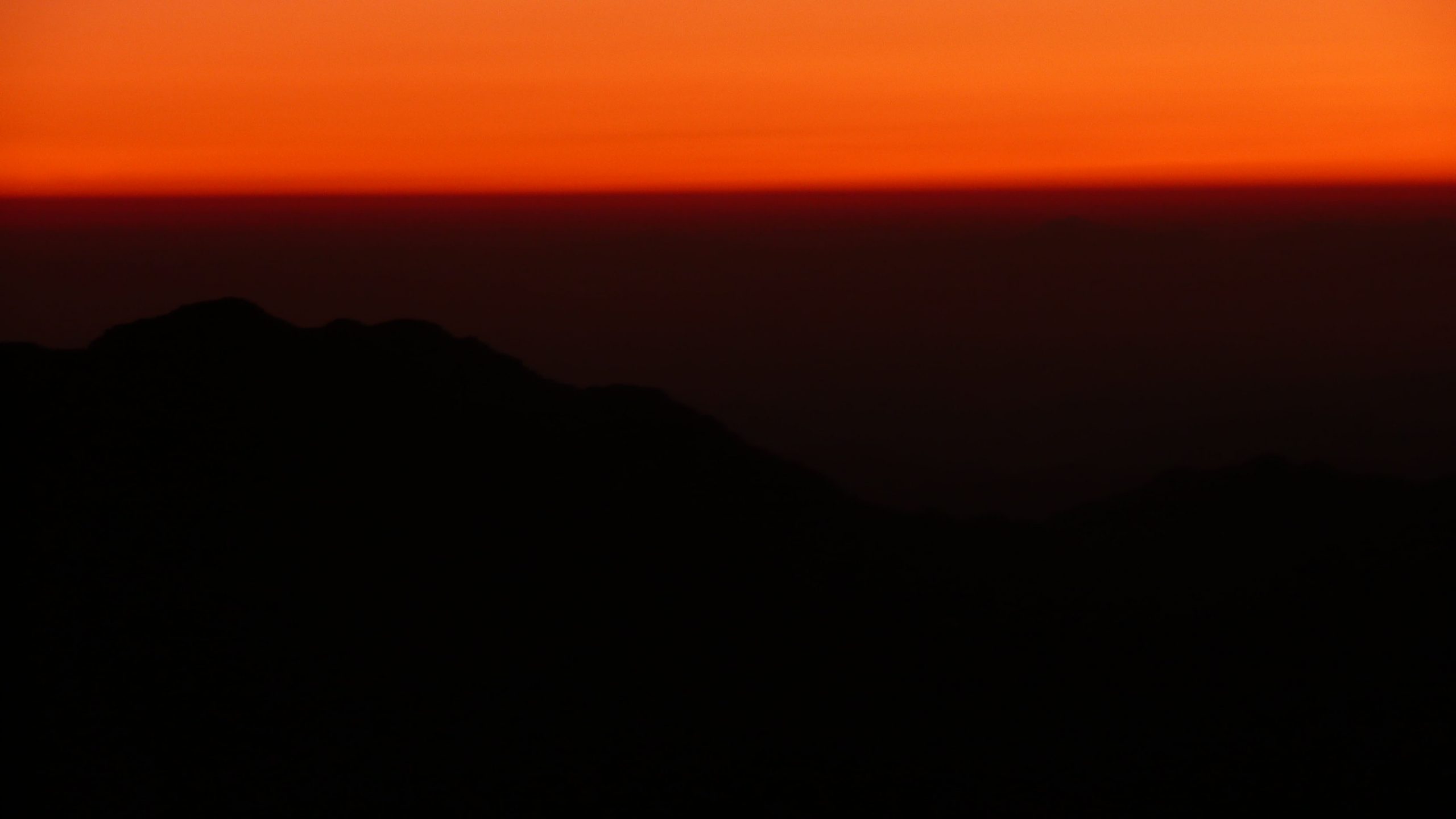
As darkness began surrendering to the night, colours of vibrancy emerged and froze, shattering the black expanse of heaven – each for a moment in time. There was magic in the air and I was struck with an overwhelming sense of awe.

Regardless of ecclesiastical dispositions, walking to the summit of Mt Sinai is a must-do adventure. The beauty exhibited by Mother Nature will leave you breathless.
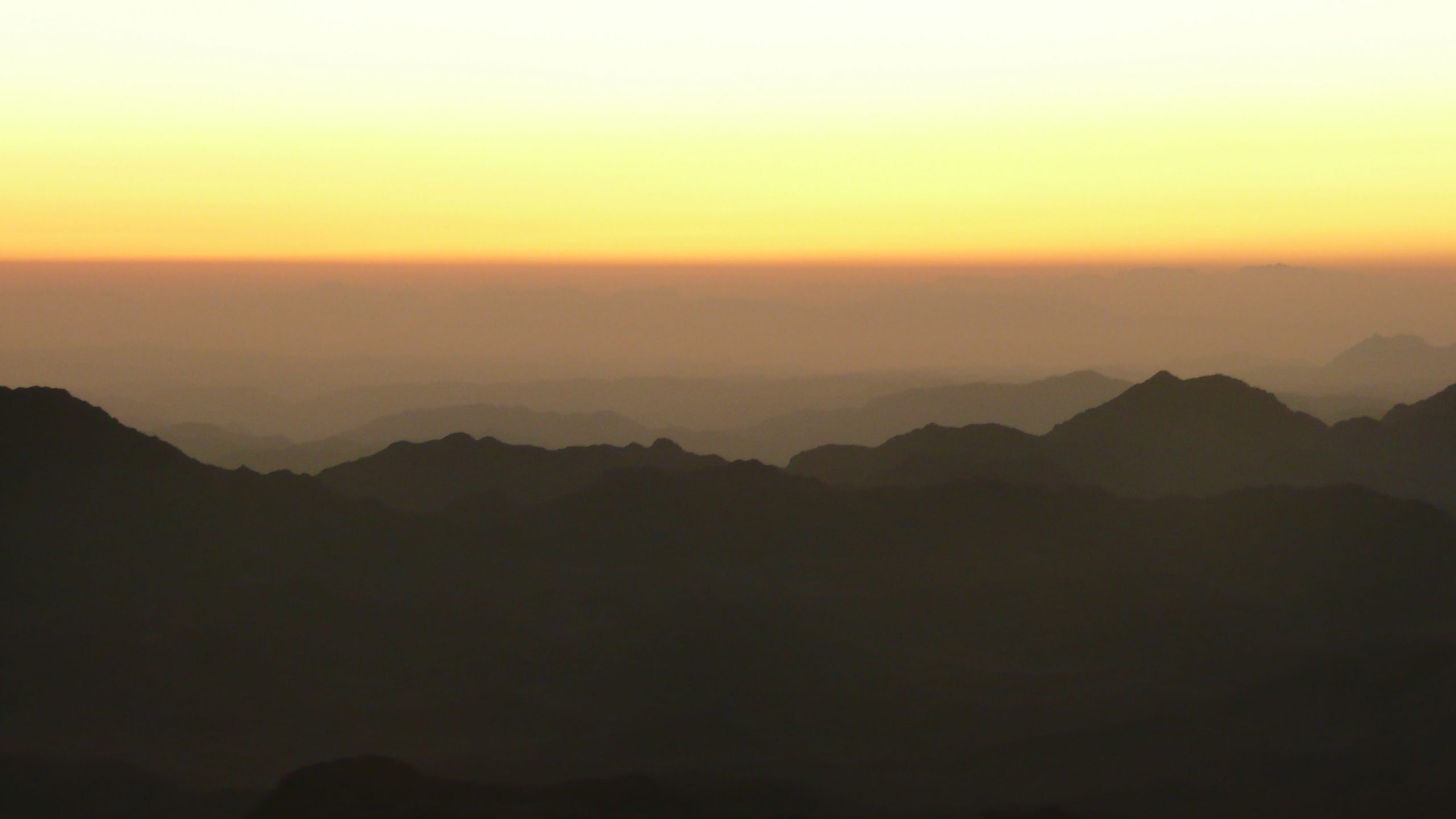
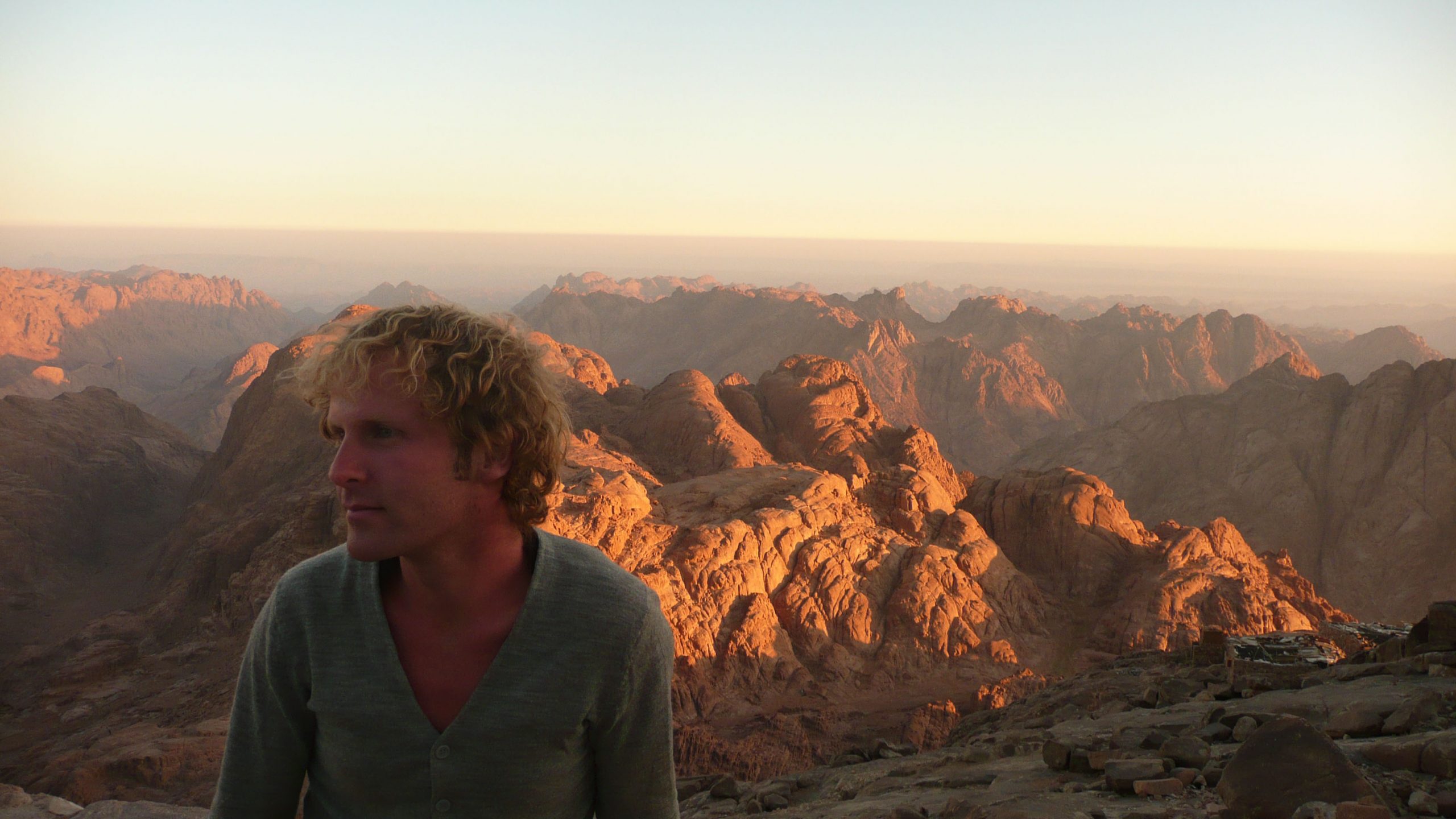
Read my account of the experience here.
For a guided experience, you might consider the Mount Moses (Sunrise) and St. Catherine Monastery from Dahab tour. It takes you on a journey to the top of Mt Sinai for sunrise, followed by a visit to St. Catherine's Monastery, with transport to and from the hike in a minivan.
➡ Click here to book your tour
You'll need at least one day to complete the journey (if leaving from Dahab shortly before midnight, hiking and driving to and from your accomodation included) with a rest in the afternoon of the day before departure. This is why I've recommended 2 days for the activity.
St Catherine's Monastery
On your way home, don't forget to stop at the Monastery in the foothills - it's on the way out. Built in the 6th century, the monastery was named after Catherine of Alexandria, a martyr whose body was hooked on a spiked wheel, tortured, then beheaded, all because of her faith. The monastery is apparently one of the oldest functioning communities of monastic life in the world.
I personally didn't enjoy the visit but perhaps I was on edge due to sleep deprivation and ill health.
Recommended Length of Stay in Sinai
I would recommend coming on a night/day tour (one recommended above). Leave your Red Sea dwellings late at night (usually around 11pm), hike for sunrise then spend an hour or two exploring the monastery and village before returning to the Red Sea.
Accommodation - Staying in Sinai
I stayed at Seven Heaven Hotel in Dahab. However, there are various lodgings based near St Catherine if you choose to come independently (without a tour package).
Budget (in town): Sheikh Mousa Bedouin Camp
It’s a great budget-friendly option if you want to experience a bit of Bedouin culture. The camp offers simple but comfortable accommodation, giving you a taste of traditional hospitality. Plus, the campfire evenings and stargazing are highlights.
Mid-Range (out of town): Mount Moses Camp
For something a bit more serene, Mount Moses Camp is situated outside of town, providing stunning views of the surrounding landscape. Whether you're gearing up for a hike up Mount Sinai or just want to relax in nature, Mount Moses Camp offers a peaceful retreat after a day of exploration.
Transportation - Getting to Sinai
By Bus/Minivan
Dahab
- Minivans and buses transport visitors in two hours to the base of the climb. Most buses depart Dahab shortly after midnight, arriving in plenty of time for the ascent. See your hotel, or any of the tour booking offices located throughout Dahab, for booking information.
Nuweiba
- Similarly, minivans transport visitors in slightly over two hours to the base of the climb. See your hotel for information regarding bookings.
Sharm el-Sheik
- It is a three-hour drive to the base of the climb. Tour companies throughout Sharm el-Sheik can arrange return transportation. Most minivans and buses would depart slightly before midnight, some at eleven pm.
Things To Know While Planning Your Egypt Solo-Traveller Itinerary
How to Get to Egypt
By Air
There are several international airports scattered throughout the country, in Cairo, Alexandria, Luxor, Aswan, Hurghada, Sharm El-Sheikh, Burg Al-Arab and Marsa Alam. This means you won't necessarily always have to go through Cairo (if you don't wish) to get to your desired destination.
Generally speaking, there are flights to Egypt from other parts of Africa, the Middle East, Europe, locations in Asia and North America.
By Land
There are bus connections between Israel and Egypt and Jordan and Egypt.
Here's some general information:
- Buses depart Jerusalem and Tel Aviv for Eilat whereby you can walk across the border to Taba and take a bus to Cairo or Sinai.
- There is a direct bus between Amman and Cairo which is operated by JETT (it does take 19 hours).
By Sea
If you are in Jordan (in Aqaba) and wish to visit Egypt, then you can take a ferry.
Here are your options:
- Take the ferry from Aqaba to Nuweiba (and then a bus south from Nuweiba to Dahab)
- Cross the border into Israel and take the ferry from Taba.
Sindbad and Babel are the two ferry companies from which to choose.
If you are in Sudan, you can take a ferry (which operates once a week) to Aswan from Wadi Halfa.
Similarly, if you are in Saudi Arabia, you can ask about taking a ferry to sea ports in along the Egyptian Red Sea coast.
How to Get Around Egypt
Egypt has several transportation options to suit different itineraries and budgets. Here’s a breakdown of the main modes:
By Air
Domestic flights are the quickest way to cover long distances, particularly if you're traveling between Cairo, Luxor, Aswan, or Sharm El Sheikh. EgyptAir, the national carrier, offers regular flights on these routes and sometimes has deals for tourists.
Flying saves time if you're on a tight schedule, but you'd need to book flights in advance for better rates, especially during peak seasons.
By Train
Egypt's rail network connects major cities along the Nile, with routes from Cairo to Alexandria, Luxor, and Aswan. Trains are a scenic, affordable way to travel and give you a chance to experience Egypt at a slower pace.
The “Sleeper Train” is popular for overnight journeys from Cairo to Luxor or Aswan. I enjoyed the relaxed pace and found the train staff friendly and helpful, though facilities may vary.
Tip: Trains tend to sell out quickly, especially in high season, so book in advance through the official Egypt National Railways website or a local travel agency.
By Bus
Buses are a budget-friendly option, with companies like Go Bus and SuperJet operating routes across the country. These services are comfortable enough for shorter journeys, though longer routes, like Cairo to Dahab, can be lengthy.
If you’re up for a more adventurous ride, the local microbuses cover extensive routes but may be crowded, with limited schedules and fewer amenities.
By Ferry
For those heading to the Red Sea or Sinai Peninsula, ferries provide scenic connections, though they run less frequently. Popular routes include Hurghada to Sharm El Sheikh, but schedules vary, so check with local operators or travel agencies in advance.
While not the fastest option, the ferry offered stunning coastal views and a unique way to travel between resort areas.
Visa for Travelling to Egypt
Regulations do change from time to time so it's best to visit the Egyptian consulate or embassy that is closest to you for up to date information.
Generally speaking, though, as a tourist-friendly country, it's not too difficult to gain access to Egypt. When I visited, a visa on arrival was possible for Australian passport holders. However, this has since changed.
There are three types of visas that may apply for travel:
- Tourist visas
- Entry visas
- Transit visas
The first of the three is the one which will likely apply to most of you. Here are a few things to note:
- Nationals of various countries can obtain a visa for the purposes of tourism on arrival at major ports
- Almost all others must have a visa approved prior to arriving in Egypt. An e-visa system has been established. See the Ministry of Foreign Affairs website for details regarding making an application.
Requirements do change so it's best to check them before boarding a plane.
Solo Travel in Egypt: What It's Like
Aside from one night of ill health, I experienced few major issues while travelling alone through Egypt. Personal safety was never a major concern, mind you it was 2011 and I was there during a period of stability. If you are planning on visiting, then please do your homework to ensure it's safe to go before booking a flight. Review the experiences of other travellers who have recently been to find out what it's like on the ground.
If you're okay with your own company, you'll likely be fine moving around the country on your own. Women can get harassed more than men which is a sad reality. I did meet solo female travellers who got a little wearisome of being sexually harassed. I'm thankful I never personally had to combat said issues. It's something about which you need to be aware, particularly if you are a female traveller and you plan to go through Egypt on your own.
I didn't spend much time with the other travellers I met during my trip. However, if you do feel like tagging along with someone else for a little while, then it'll likely be possible in Egypt. It's a fairly well-visited country even during times of political instability.
I truly hope you get as much joy out of visiting Egypt as a solo traveller as did I.
Can this itinerary be adjusted?
Yes.
There are inclusions and exclusions that can be completed to personalise the itinerary, depending on personal preferences. It can be done within the timeframes suggested, slowed down or even accelerated a little. It really does depend on you, your budget, preferences and time constraints.
Realistically, this itinerary could be completed in two weeks, or even in 10 days if you're willing to rush a little. However, I prefer to take it slow these days and absorb as much as I can while en route. For me, it's really about the journey, not the final destination.
Recommended Books for Egypt Solo-Traveller Itinerary Planning
Egypt, by Insight Guides
An option is the Insight Guide to Egypt, a pictorial travel guide presented in a magazine style that addresses key questions for your trip, from deciding when to go to Egypt to choosing what to see, including exploring Aswan and the Temple of Karnak.
It's ideal for travellers seeking inspiration and in-depth cultural and historical information about Egypt, along with a curated selection of must-visit places such as the Pyramids of Giza and the Red Sea.
With striking photography, high-quality maps, and practical travel information, it's a comprehensive resource.
Egypt, by Lonely Planet
When I planned my solo trip to Egypt (and on to Cape Town, overland), I had the Lonely Planet Africa guide on hand, which has a section dedicated to Egypt. It’s useful, though naturally a bit broad, given it covers an entire continent.
If you’re looking for a more Egypt-focused guide, though, I’d suggest picking up Lonely Planet Egypt, which gives in-depth tips on where to stay, eat, and explore, especially for solo travellers wanting a mix of major sights and lesser-known spots.
Travel Insurance for Visiting Egypt
World Nomads
When it comes to travel insurance for Egypt, I went with World Nomads, and I’d recommend it if you're looking for solid coverage, especially for unexpected situations.
Egypt is full of surprises — whether it’s the sheer energy of Cairo’s streets or the ancient tombs — and having insurance made the trip feel a lot easier. World Nomads covers everything from medical emergencies to stolen bags, which gave me peace of mind knowing I could focus on the experience without too much worry.
They’re also quick and easy to use, which helped keep things stress-free during my time in Egypt.
Frequently Asked Questions
Before you head to Egypt, it’s natural to have a few questions.
Here’s a quick rundown of what you need to know so you can plan confidently.
How Many Days Are Needed for Egypt?
It really depends on what you want to see. Egypt has layers of history, landscapes, and experiences, so how long you need will depend on your goals.
For a quick overview, a week is the minimum you’ll need to see the essentials. In that time, you can explore Cairo (with the Pyramids of Giza and Egyptian Museum), Luxor (Valley of the Kings and Karnak Temple), and possibly a day or two in Aswan. This is ideal if you’re short on time but still want to hit the main highlights.
If you have a bit more flexibility, 10–14 days lets you cover more ground and travel at a reasonable pace. You can add a Nile cruise between Luxor and Aswan, and include sites like Abu Simbel in the south. This timeframe also allows for more relaxed exploration of each city.
For those with three weeks or more, you can dive into Egypt’s lesser-known spots. This includes off-the-beaten-path destinations like Siwa Oasis in the west, Dahab on the Red Sea, or exploring Sinai. Three weeks lets you soak up both the major sites and Egypt’s hidden gems, offering a richer, more immersive experience.
What Is The Best Month to Go to Egypt?
The best time to visit Egypt largely depends on what you’re looking for in terms of weather, cultural experiences, and crowd levels.
If you prefer mild weather, the most popular months are between October and April. This period, especially November to February, offers cooler temperatures across Egypt — ideal for exploring the desert, visiting the temples in Luxor and Aswan, and wandering Cairo without the intense summer heat. However, these months are also the peak tourist season, so expect higher prices and more crowds, especially at popular sites.
If you’re comfortable with warmer temperatures, May and September can be great shoulder months. While it’s hotter than peak season, it’s usually still bearable in most areas, and you’ll find fewer tourists and better deals on accommodations and tours. These months can strike a nice balance between affordability and decent weather.
For those who don’t mind intense heat, June to August can be a unique time to experience Egypt with minimal crowds, as most tourists avoid the summer months. Note, though, that in southern Egypt, like Luxor and Aswan, temperatures can soar well above 40°C (104°F), so it’s best to plan sightseeing for early mornings or late afternoons. I was in Egypt during August, and while it was extremely hot, I found the quieter atmosphere enjoyable.
If you visit during Ramadan, which shifts each year, it adds an additional layer to the experience. In August, I found Egypt’s atmosphere during Ramadan especially unique: many shops and restaurants close or operate with shorter hours, but there’s a festive feel in the evenings after sundown.
How Far Does $100 Go in Egypt?
Based on my experience, $100 USD can stretch surprisingly far in Egypt, especially if you budget carefully and lean into the local scene. Here’s how far it got me:
Accommodation
I found budget hotels or hostels for around $20-30 per night, especially in cities like Cairo and Luxor. If you’re solo travelling, that means $100 can cover a few nights in basic but comfortable places — or one night in a mid-range hotel if you want to splurge a bit.
Food
Eating local was one of my favourite parts, and I noticed that meals at local spots cost only $3-5. With $100, you cover meals for several days, enjoying everything from koshari to street food falafel. For higher-end restaurants, you'd need to spend around $10-20 per meal, but even then, it won't break the bank.
Transportation
Egypt’s public transportation is affordable, and I used the Cairo metro and local buses for less than $1 per ride. For longer distances, a train or intercity bus ticket is usually in the $10-20 range. With shared rides, $100 easily covers several days’ worth of transportation, even allowing for the occasional Uber or taxi at $3-5 a ride.
Entry Fees and Tours
Visiting historic sites was one of my priorities, and entrance fees ranged from $10-20 for places like the Pyramids of Giza or the temples in Luxor. A $100 budget covers multiple site entries and could even pay for a half-day tour around Cairo.
So, for me, $100 comfortably covered a full day of food, transport, and sightseeing. And with a little flexibility, it stretched even further.
It’s definitely doable to manage on $100 a day or less, especially if you mix in local eats and affordable transport.
Which Language Do They Speak in Egypt?
The official language of Egypt is Arabic, and you’ll hear it spoken everywhere, from bustling markets to quiet cafes. The Egyptian dialect, or Masri, has a unique flair, and locals often take pride in their distinct pronunciation and phrases.
English is widely spoken in more touristy areas, like Cairo, Luxor, and Alexandria, especially in hotels, restaurants, and by guides at major sites. However, outside these places, in smaller towns or rural areas, you’ll find fewer English speakers.
French also pops up occasionally, a lingering influence from Egypt’s historical ties with France, though it’s far less common than Arabic or English.
Personally, I got by on a mix of English and a few basic Arabic phrases, and even though I don’t speak Arabic fluently, locals were generally patient, often willing to help bridge the language gap.
Which Currency Do They Use in Egypt?
Egypt uses the Egyptian Pound, abbreviated as EGP and often written as "LE" (Livre Égyptienne). You’ll find it easy to handle, as the currency is divided into 100 piastres. Bills come in a range of denominations, with larger notes for pounds and smaller ones for piastres.
While US dollars are sometimes accepted in major tourist spots, it’s best to have Egyptian Pounds on hand for local purchases, especially in markets, restaurants, and smaller shops. I found it convenient to exchange money once I arrived, as exchange rates at Cairo’s airport and in banks or exchange offices were reasonable.
Credit cards are accepted in higher-end hotels and larger restaurants, but for day-to-day spending, especially outside major cities, cash in Egyptian Pounds is essential.
Solo-Traveller Itinerary For Visiting Egypt - Conclusion
There you have the journey I undertook as a solo backpacker in Egypt, the starting point of a Cairo-to-Cape Town overland itinerary. I'm often filled with nostalgia when I daydream about sailing down the Nile, wandering around the Pyramids or catching sight of an embalmed pharaoh. Each country is unique, of course, but there are truly no other places on earth quite like Egypt.
It's engrossing. It's hospitable. It's a masterpiece of the ancient world. It got under my skin and I daresay it'll get under yours, too.





















































